Dominant-party system
A dominant-party system, or one-party dominant system is a political system in which opposition groups or parties are permitted, but a single party dominates election results.[1] Any ruling party staying in power for more than one consecutive term may be considered a dominant (also referred to as predominant or hegemonic) party.[2]
| Part of the Politics series | ||||||
| Party politics | ||||||
|---|---|---|---|---|---|---|
.svg.png.webp) | ||||||
| Political spectrum | ||||||
|
||||||
| Party platform | ||||||
| Party organization | ||||||
| Party Leadership | ||||||
|
||||||
| Party system | ||||||
|
|
||||||
| Coalition | ||||||
|
|
||||||
| Lists | ||||||
|
| ||||||
Between 1950 and 2017, more than 130 countries were included in the list of dominant-party systems, i.e., almost every state in the world on national, sub-national and district levels, both democratic and authoritarian.[3]
Contemporary examples include United Russia (UR) in Russia, the Justice and Development Party (AKP) in Turkey, the Serbian Progressive Party (SNS) in Serbia,[4][5] the United Socialist Party of Venezuela (PSUV) in Venezuela, the Justicialist Party (PJ) in Argentina, the New Azerbaijan Party (YAP) in Azerbaijan, Georgian Dream in Georgia, Nur Otan in Kazakhstan, the People's Democratic Party of Tajikistan (PDPT) in Tajikistan, the Uzbekistan Liberal Democratic Party in Uzbekistan, the Mongolian People's Party (MPP) in Mongolia, Fidesz in Hungary, the People's Action Party (PAP) in Singapore, the Scottish National Party (SNP) in Scotland, Welsh Labour in Wales, the African National Congress (ANC) in South Africa,[6] the Liberal Democratic Party (LDP) in Japan,[6] the Cambodian People's Party (CPP) in Cambodia, the Awami League in Bangladesh, the ZANU–PF in Zimbabwe, the National Resistance Movement (NRM) in Uganda, the Botswana Democratic Party (BDP) in Botswana, the MPLA in Angola, the Rwandan Patriotic Front (RPF) in Rwanda, the Human Rights Protection Party (HRPP) in Samoa, Chama Cha Mapinduzi (CCM) in Tanzania, SWAPO in Namibia and the CNDD–FDD in Burundi.
Theory
Critics of the "dominant party" theory argue that it views the meaning of democracy as given, and that it assumes that only a particular conception of representative democracy (in which different parties alternate frequently in power) is valid.[6] Raymond Suttner, himself a former leader of the African National Congress (ANC), argues that "the dominant party 'system' is deeply flawed as a mode of analysis and lacks explanatory capacity. But it is also a very conservative approach to politics. Its fundamental political assumptions are restricted to one form of democracy, electoral politics and hostile to popular politics. This is manifest in the obsession with the quality of electoral opposition and its sidelining or ignoring of popular political activity organised in other ways. The assumption in this approach is that other forms of organisation and opposition are of limited importance or a separate matter from the consolidation of their version of democracy."[6]
One of the dangers of dominant parties is "the tendency of dominant parties to conflate party and state and to appoint party officials to senior positions irrespective of their having the required qualities."[6] However, in some countries this is common practice even when there is no dominant party.[6] In contrast to one-party systems, dominant-party systems can occur within a context of a democratic system. In a one-party system other parties are banned, but in dominant-party systems other political parties are tolerated, and (in democratic dominant-party systems) operate without overt legal impediment, but do not have a realistic chance of winning; the dominant party genuinely wins the votes of the vast majority of voters every time (or, in authoritarian systems, claims to). Under authoritarian dominant-party systems, which may be referred to as "electoralism" or "soft authoritarianism", opposition parties are legally allowed to operate, but are too weak or ineffective to seriously challenge power, perhaps through various forms of corruption, constitutional quirks that intentionally undermine the ability for an effective opposition to thrive, institutional and/or organizational conventions that support the status quo, occasional but not omnipresent political repression, or inherent cultural values averse to change.
In some states opposition parties are subject to varying degrees of official harassment and most often deal with restrictions on free speech (such as press laws), lawsuits against the opposition, and rules or electoral systems (such as gerrymandering of electoral districts) designed to put them at a disadvantage. In some cases outright electoral fraud keeps the opposition from power. On the other hand, some dominant-party systems occur, at least temporarily, in countries that are widely seen, both by their citizens and outside observers, to be textbook examples of democracy. An example of a genuine democratic dominant-party system would be the pre-Emergency India, which was almost universally viewed by all as being a democratic state, even though the only major national party at that time was the Indian National Congress. The reasons why a dominant-party system may form in such a country are often debated: supporters of the dominant party tend to argue that their party is simply doing a good job in government and the opposition continuously proposes unrealistic or unpopular changes, while supporters of the opposition tend to argue that the electoral system disfavors them (for example because it is based on the principle of first past the post), or that the dominant party receives a disproportionate amount of funding from various sources and is therefore able to mount more persuasive campaigns. In states with ethnic issues, one party may be seen as being the party for an ethnicity or race with the party for the majority ethnic, racial or religious group dominating, e.g., the African National Congress in South Africa (governing since 1994) has strong support amongst Black South Africans and the Ulster Unionist Party governed Northern Ireland from its creation in 1921 until 1972 with the support of the Protestant majority.
Sub-national entities are often dominated by one party due to the area's demographic being on one end of the spectrum. For example, the current elected government of the District of Columbia has been governed by Democrats since its creation in the 1970s, Bavaria by the Christian Social Union since 1957, Madeira by the Social Democrats since 1976, and Alberta by Progressive Conservatives from 1971 to 2015. On the other hand, where the dominant party rules nationally on a genuinely democratic basis, the opposition may be strong in one or more subnational areas, possibly even constituting a dominant party locally; an example is South Africa, where although the African National Congress is dominant at the national level, the opposition Democratic Alliance is strong to dominant in the Province of Western Cape.
Current dominant-party systems
Africa
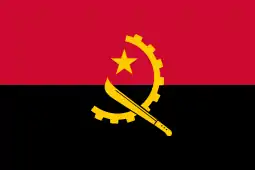 Angola
Angola
- Popular Movement for the Liberation of Angola, Movimento Popular de Libertação de Angola (MPLA):[7][8] In power since independence, 11 November 1975; sole legal party, 1975–91
- Formerly led by President José Eduardo dos Santos (in office from 10 September 1979 to 28 August 2017) and now led by João Lourenço.
- Presidential election, 1992: dos Santos (MPLA-PT) won 49.6% of the vote. As this was not an absolute majority, a runoff against Jonas Savimbi (40.1%) was required, but did not take place. Dos Santos remained in office without democratic legitimacy.
- New constitution, 2010: popular election of president abolished in favour of a rule that the top candidate of the most voted party in parliamentary elections becomes president.
- Parliamentary election, 2017: MPLA 61.11% and 150 of 220 seats.
 Botswana
Botswana
- Botswana Democratic Party (BDP):[9] Led by President Mokgweetsi Masisi, in office since 1 April 2018
- In power since independence in 1966,[10] first elected 3 March 1965
- Parliamentary election, 2019: BDP 52.65% and 38 of 57 seats
- Local elections, 2009: BDP 333 of 490 seats
 Burundi
Burundi
- National Council for the Defense of Democracy-Forces for the Defense of Democracy (CNDD-FDD): In power since 2005
- Led by President Pierre Nkurunziza, in office since 26 August 2005
- Presidential election, 2020: CNDD-FDD 71.45%
 Cameroon
Cameroon
- Cameroon People's Democratic Movement (Rassemblement Démocratique et Populaire du Cameroun, RDPC): Led by President Paul Biya, in office since 6 November 1982
- In power, under various names, since independence, 1 January 1960 (Sole legal party, 1966–1990)
- Presidential election, 2018: Paul Biya (RDPC) 71.28%
- Parliamentary election, 2020: RDPC 139 of 180 seats
 Chad
Chad
- Patriotic Salvation Movement (Mouvement Patriotique de Salut de SMPS): Led by President Idriss Déby Itno, in office since 2 December 1990
- In power since 2 December 1990
- Presidential election, 2016: Idriss Déby (MPS) 59.92%
- Parliamentary election, 2011: MPS 110 of 155 seats
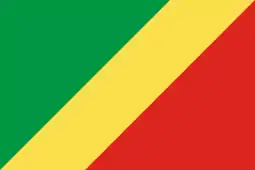 Republic of the Congo
Republic of the Congo
- Congolese Party of Labour (Parti Congolais du Travail, PCT): Led by President Denis Sassou-Nguesso, in office from 8 February 1979 to 31 August 1992 and since 15 October 1997
- In power, under various names, from 1969 to 1992 and since 1997 (Sole legal party, 1963–1990)
- Parliamentary election, 2017: PCT 90 of 139 seats
- Presidential election, 2016: Denis Sassou-Nguesso (PCT) 60.19%
 Djibouti
Djibouti
- People's Rally for Progress (Rassemblement Populaire pour de Progrès, RPP)
- Led by President Ismail Omar Guelleh, in office since 8 May 1999
- In power since its formation in 1979 (Sole legal party, 1979–1992)
- Parliamentary election, 2018: RPP in coalition, 87.83% and 57 of 65 seats
- Presidential election, 2016: Ismail Omar Guelleh (RPP) 87.07%
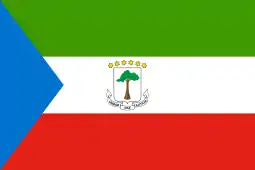 Equatorial Guinea
Equatorial Guinea
- Democratic Party of Equatorial Guinea (Partido Democrático de Guinea Ecuatorial, PDGE)
- Led by President Teodoro Obiang Nguema Mbasogo, in office since 3 August 1979: In power since its formation in 1987 (Sole legal party, 1987–1991)
- Senate election, 2017: PDGE 92.00% 55 of 70 seats (Includes 15 unelected representatives appointed by the president.)
- Chamber of People's Representatives election, 2017: PDGE 92.00% 99 of 100 seats
- Presidential election, 2016: Teodoro Obiang Nguema Mbasogo (PDGE) 93.53%
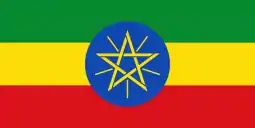 Ethiopia
Ethiopia
- Prosperity Party, previously Ethiopian People's Revolutionary Democratic Front (EPRDF): Led by Prime Minister Abiy Ahmed, in office since 2 April 2018
- In power since 28 May 1991 (party reorganization 2019)
- Parliamentary election, 2015: 500 of 547 seats (546 of 547 seats including allies)
- Regional election, 2015: Regional partners 1987 of 1990 seats
 Gabon
Gabon
- Gabonese Democratic Party (Parti Démocratique Gabonais, PDG): Led by President Ali Bongo Ondimba, in office since 16 October 2009
- In power, under various names, since 28 November 1958 (Sole legal party, 1968–1991)
- Parliamentary election, 2018: PDG 98 of 120 seats
- Presidential election, 2016: Ali Bongo Ondimba 49.8%
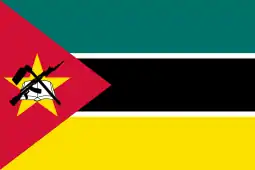 Mozambique
Mozambique
- Mozambican Liberation Front (FRELIMO)
- Led by President Filipe Nyusi, in office since 15 January 2015
- In power since independence, 25 June 1975 (Sole legal party, 1975–1990)
- Presidential election, 2019: Filipe Nyusi (FRELIMO) 73.46%
- Parliamentary election, 2019: FRELIMO 71.28% and 184 of 250 seats
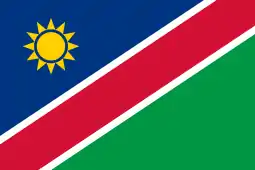 Namibia
Namibia
- South West Africa People's Organisation (SWAPO)
- Led by President Hage Geingob, in office since 21 March 2015
- In power since independence, 21 March 1990
- Presidential election, 2019: Hage Geingob (SWAPO) 56.3%
- Parliamentary election, 2019: SWAPO 63 of 96 seats
- Local elections, 2015: SWAPO 112 of 121 seats
- Regional elections, 2015: SWAPO 277 of 378 seats
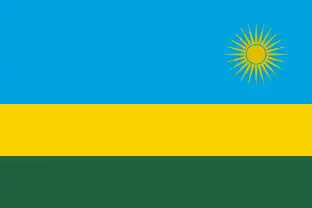 Rwanda
Rwanda
- Rwandan Patriotic Front (RPF)
- Led by President Paul Kagame, in office since 24 March 2000
- In power since 19 July 1994
- Presidential election, 2017: Paul Kagame (RPF) 98.79%
- Parliamentary election, 2018: RPF 73.95% and 40 of 80 seats
 South Africa
South Africa
- African National Congress (ANC)
- Led by President Cyril Ramaphosa, in office since 15 February 2018
- In power since 10 May 1994
- Parliamentary election, 2019: ANC 57.50% and 230 of 400 seats
- Municipal elections, 2016: ANC 53.91%
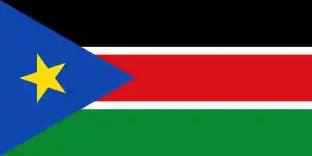 South Sudan
South Sudan
- Sudan People's Liberation Movement (SPLM)
- Led by President Salva Kiir Mayardit, in office since 9 July 2011; and was President of Southern Sudan since 30 July 2005
- In power since independence, 9 July 2011; and in the autonomous Government of Southern Sudan since formation, July 9, 2005
- Presidential election, 2010: Salva Kiir Mayardit (SPLM) 92.99%
- Parliamentary election, 2010: SPLM 160 of 170 seats
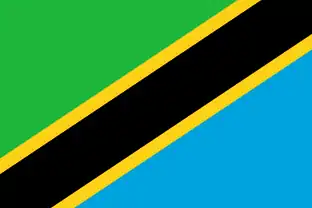 Tanzania[11]
Tanzania[11]
- Chama Cha Mapinduzi (CCM): Led by President John Magufuli, in office since 5 November 2015
- In power, under various names, since independence, 9 December 1961 (Sole legal party, 1964–1992)
- Civic election, 2014: CCM 74.50%
- Presidential election, 2015: John Magufuli (CCM) 58.46%
- Parliamentary election, 2015: CCM 252 of 367 seats
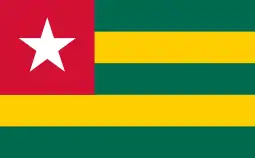 Togo
Togo
- Union for the Republic (UNIR): Led by President Faure Gnassingbé, in office since 5 February 2005
- In power since its formation in 2012
- Presidential election, 2020: Faure Gnassingbé (UNIR) 70.78%
- Parliamentary election, 2018: UNIR 59 of 91 seats
 Uganda
Uganda
- National Resistance Movement (NRM): Led by President Yoweri Museveni, in office since 29 January 1986.
- In power as de facto dominant party since 29 January 1986 as a "non-party Movement."
- Became de jure dominant party with the return of multi-party elections on 28 July 2005.
- Presidential election, 2016: Yoweri Museveni (NRM) 60.62%
- Parliamentary election, 2016: NRM 293 of 426 seats
 Western Sahara
Western Sahara
- The Polisario Front is the only political party represented in the government in exile of the Sahrawi Arab Democratic Republic (headquartered in neighbouring Algeria)
- Legislative election, 2012: 53 of 53 Seats
- Other parties are permitted in the Sahrawi constitution, but currently none exist
- The United Nations has designated the Polisario Front to be the sole legitimate representative of the Sahrawi people[12]
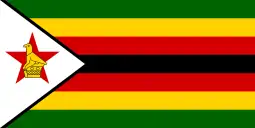 Zimbabwe
Zimbabwe
- Zimbabwe African National Union – Patriotic Front (ZANU-PF): Formerly led by President Robert Mugabe, in office from 18 April 1980 to 21 November 2017 (as president since 31 December 1987) and now led by Emmerson Mnangagwa since 24 November 2017. In power since independence, 17 April 1980
- Presidential election, 2018: Emmerson Mnangagwa (ZANU-PF) 50.8%
- House of Assembly election, 2018: ZANU-PF 179 of 270 elective seats
- Senate election, 2018: ZANU-PF 43.8% and won 34 of 80 elective seats
Americas
 Antigua & Barbuda
Antigua & Barbuda
- The Barbuda People's Movement has ruled the island of Barbuda since 1979, and has won every election for the island's seat in the national House of Representatives.
 Argentina
Argentina
- The Justicialist Party has won every gubernatorial election since 1973 in the provinces of Formosa, La Pampa, San Luis, Santa Cruz and La Rioja.
- The Neuquén People's Movement has won every gubernatorial election since 1962 in the province of Neuquén
 Bolivia
Bolivia
- Movement Toward Socialism (MAS) from 2006 to 2019 and came back to power in 2020.
- 2020 Bolivian general election: Luis Arce: 55.10%, won 75 chamber seats and 21 senate seats
 Brazil
Brazil
 São Paulo: has been dominated by the Brazilian Social Democracy Party since 1994.
São Paulo: has been dominated by the Brazilian Social Democracy Party since 1994.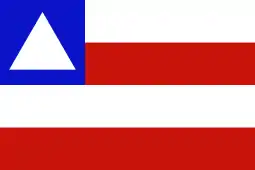 Bahia: the Workers' Party has won every gubernatorial election since 2002.
Bahia: the Workers' Party has won every gubernatorial election since 2002.
 Costa Rica
Costa Rica
- Citizens' Action Party[3] in power since 2014. Currently opposition parties are in talks for a coalition to avoid a third consecutive period.[13]
.svg.png.webp) San José: Johnny Araya is the Mayor of San Jose since 1998 and is a member of the National Liberation Party. Araya only resign his office for a short period of time to be presidential candidate in the 2014 Costa Rican general election and was reelected back to mayor in the following 2016 San José mayoral election although using a local party as he was temporarily banned from PLN, he return to PLN soon after the election.
San José: Johnny Araya is the Mayor of San Jose since 1998 and is a member of the National Liberation Party. Araya only resign his office for a short period of time to be presidential candidate in the 2014 Costa Rican general election and was reelected back to mayor in the following 2016 San José mayoral election although using a local party as he was temporarily banned from PLN, he return to PLN soon after the election. Curridabat: 21st Century Curridabat has elected all Curridabat mayors since direct mayor elections exist in Costa Rica in 2002.
Curridabat: 21st Century Curridabat has elected all Curridabat mayors since direct mayor elections exist in Costa Rica in 2002.
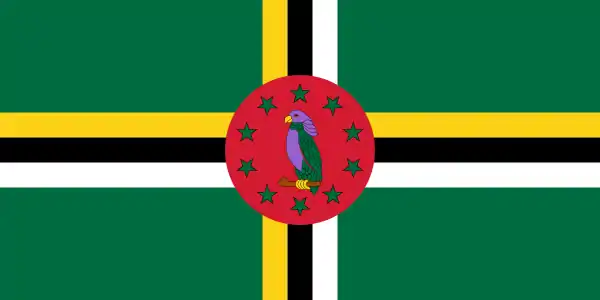 Dominica
Dominica
- Dominica Labour Party: Led by Roosevelt Skerrit and Charles Savarin
- In power since 2000
- 2019 Dominican general election: 58.95% and won 18 of 21 seats
 Mexico
Mexico
- The Institutional Revolutionary Party (PRI) has won every gubernatorial election in the states of Coahuila, Colima, Campeche, Hidalgo and the State of Mexico since its foundation in 1929.
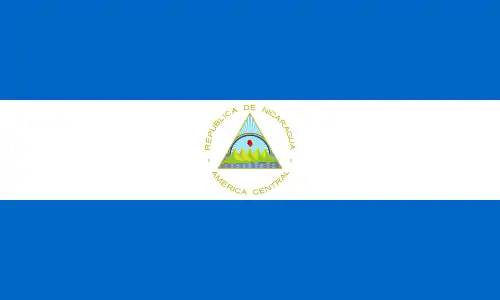 Nicaragua
Nicaragua
- FSLN: Led by Daniel Ortega. Presidency since 2007 (and 1979–1990) mayor of every major city, including Managua, majorities in most departments.
- Local elections, 2012: 75,7% and 127 of 153 seats
- General election, 2016: Daniel Ortega 72.5%
- National election, 2016: 66.8%
- Constituency election, 2016: 65.7%
- Central American Parliament, 2016: 68.6%
 Venezuela
Venezuela
- United Socialist Party of Venezuela led Great Patriotic Pole: In power since 1999, led by Hugo Chavez, then Nicolás Maduro
- 2017 Venezuelan Constituent Assembly election: won 538 of 545 seats
- 2017 Venezuelan regional elections: 52.7%
- 2017 Venezuelan municipal elections: GPP 71.31% and won 306 of 365 seats
- 2018 Venezuelan presidential election: Nicolás Maduro 67.8%
- 2020 Venezuelan parliamentary election: GPP claimed 70% of the seats.
- As of 2021, legislative, judiciary and executive are de facto controlled by Maduro's party
Canada
Canada's lower house, the House of Commons of the Parliament of Canada, is a multi-party system. Multiple political parties are represented, however every federal election since WWII has seen in essence only two federal parties win enough seats to form a government: the Liberal Party, and various iterations of a conservative party including the now defunct Progressive Conservative Party of Canada and the newly-formed Conservative Party, which governed from 2006 to 2015.
With the emergence and strengthening of regional, and other non-traditional parties such as the Bloc Québécois following the Meech Lake Accord and the New Democratic Party, which have both served as the Official Opposition, both the Liberal and Conservative Party have relied on unofficial support from these smaller parties when in Minority Governments.
The Liberal Party of Canada has nonetheless been dominant in federal politics of Canada since its founding. So much so, that critics and academics alike have sometimes described the Liberal Party as "Canada's natural governing party".[14]
As of 2020, the Liberal Party of Canada has governed for 83 of the past 120 years. Canada's 23rd Prime Minister Justin Trudeau, has been the 13th Liberal to serve as Prime Minister.
The party ruled between 1935 and 1984 (the only exceptions being in 1957–1963 and 1979–1980), as well as 1896–1911, 1921–1930 (except a few months), and 1993–2006. In late 2006, the newly formed Conservative Party of Canada were elected, governing until 2015.
After a nearly a decade in opposition, the Liberals returned to power following the 2015 election and were subsequently re-elected in the 2019 election. [15]
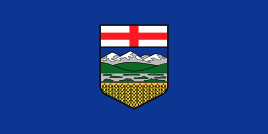 Alberta has been predominantly ruled by conservative parties since 1971. From 1971 to 2015, the ruling party was the Progressive Conservative Party. In the 2015 election, a split creating the Wildrose Party led to a one-off NDP led government due to the First Past the Post electoral system despite both right wing parties between them having a far bigger share of the vote. The Wildrose and Progressive Conservative parties reconciled to form the United Conservative Party of Alberta, restoring the conservatives' dominant position and governing from 2019 to present.
Alberta has been predominantly ruled by conservative parties since 1971. From 1971 to 2015, the ruling party was the Progressive Conservative Party. In the 2015 election, a split creating the Wildrose Party led to a one-off NDP led government due to the First Past the Post electoral system despite both right wing parties between them having a far bigger share of the vote. The Wildrose and Progressive Conservative parties reconciled to form the United Conservative Party of Alberta, restoring the conservatives' dominant position and governing from 2019 to present.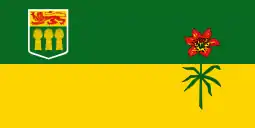 Saskatchewan has seen the Saskatchewan Party win four consecutive elections in 2007, 2011, 2016, and 2020; with a majority government secured for the party in each of them. The Saskatchewan Party won 51 of the 61 seats in the 2016 election.
Saskatchewan has seen the Saskatchewan Party win four consecutive elections in 2007, 2011, 2016, and 2020; with a majority government secured for the party in each of them. The Saskatchewan Party won 51 of the 61 seats in the 2016 election.
United States
As a whole, the nation has a two-party system, with the main parties since the mid-19th century being Democratic Party and the Republican Party. However, some states and cities have been dominated by one of these parties for up to several decades. Generally, the Democratic Party dominate in the urban metropolitan areas, while the Republican Party dominate in the rural areas. Following the 2018 elections, the Republican Party continued to hold a majority of State Legislatures and a majority of Governorships. However the Democratic Party won a majority of seats in the House of Representatives, while the Republican Party increased their majority in the Senate, resulting in a split Congress. As a consequence of Joe Biden's victory in the 2020 election, the Democratic Party also controls the Presidency.
Dominated by the Democratic Party:
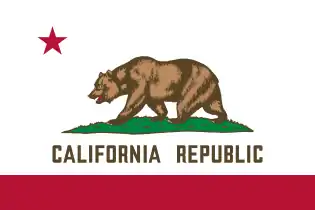 California had Republican governors as late as 2011 (except 1975-1983 and 1999-2003) but has voted for Democrats in national races and has a legislature dominated by the Democrats since the 1990s. Due to the top two primary election, many statewide and local races are contested by two members of the Democratic Party in the general election. State Legislatures are controlled by the Democrats since 1970 (except 1994-1996).
California had Republican governors as late as 2011 (except 1975-1983 and 1999-2003) but has voted for Democrats in national races and has a legislature dominated by the Democrats since the 1990s. Due to the top two primary election, many statewide and local races are contested by two members of the Democratic Party in the general election. State Legislatures are controlled by the Democrats since 1970 (except 1994-1996).
- United States presidential election, 2016: Hillary Clinton (Democratic) 61.73% and won 55 electoral votes
- United States Senate election, 2016: Democrats 61.6%
- State Assembly election, 2016: Democrats 61.08% and won 55 of 80 seats
- United States House of Representatives elections Democrats 63.91% and won 39 of 53 seats
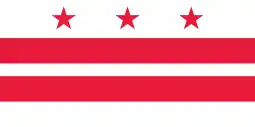 District of Columbia has been continuously governed by Democrats since the Home Rule Act of 1973 was passed.
District of Columbia has been continuously governed by Democrats since the Home Rule Act of 1973 was passed.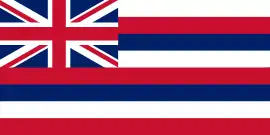 Hawaii has been dominated by Democrats since the Democratic Revolution of 1954. Beforehand, the then-Territory of Hawaii was dominated by Republicans and a sugar oligarchy.
Hawaii has been dominated by Democrats since the Democratic Revolution of 1954. Beforehand, the then-Territory of Hawaii was dominated by Republicans and a sugar oligarchy.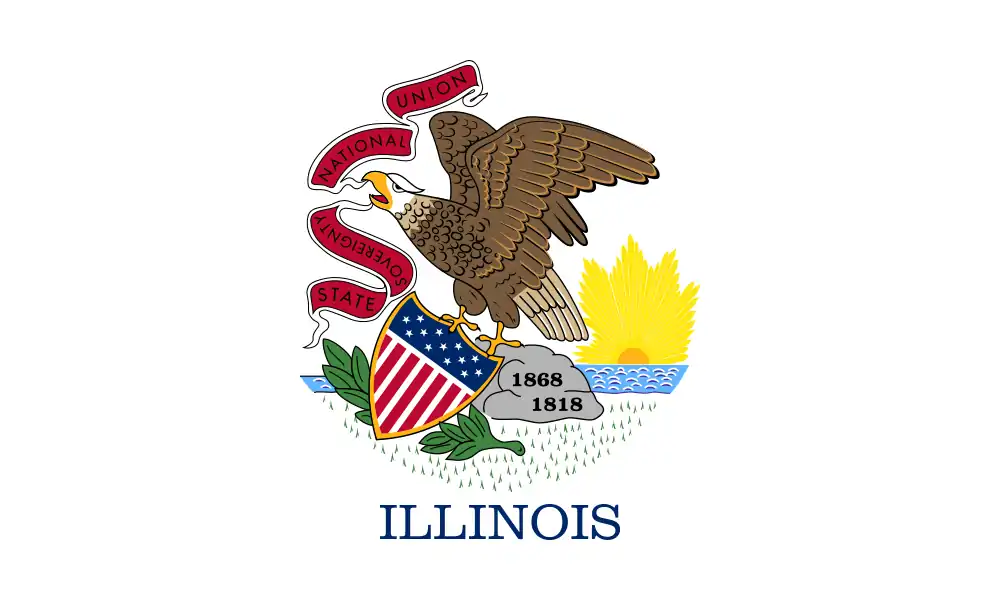 Illinois has been governed under a Democratic super-majority in both houses of the legislature and the governorship since the 2018 elections. Chicago, has been historically dominated by the Cook County Democratic Party – the office of mayor has been filled by a Democrat continuously since 1931.
Illinois has been governed under a Democratic super-majority in both houses of the legislature and the governorship since the 2018 elections. Chicago, has been historically dominated by the Cook County Democratic Party – the office of mayor has been filled by a Democrat continuously since 1931. New York has an overwhelmingly Democratic population. Democrats have controlled all statewide offices since 2006 (not counting the governor, a Republican was last elected statewide in 2002).
New York has an overwhelmingly Democratic population. Democrats have controlled all statewide offices since 2006 (not counting the governor, a Republican was last elected statewide in 2002).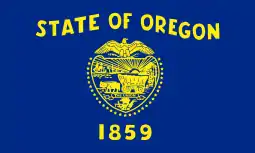 Oregon, while once a heavily Republican state, has had only one Republican governor since 1975, has voted Democrat in every Presidential election since 1988, and had no Republican statewide elected officials from 2002 until the election of Dennis Richardson as Oregon Secretary of State in 2016.
Oregon, while once a heavily Republican state, has had only one Republican governor since 1975, has voted Democrat in every Presidential election since 1988, and had no Republican statewide elected officials from 2002 until the election of Dennis Richardson as Oregon Secretary of State in 2016. Massachusetts has been dominated by Democrats for several decades, however there have been a number of Republican governors including the current governor Charlie Baker
Massachusetts has been dominated by Democrats for several decades, however there have been a number of Republican governors including the current governor Charlie Baker Maryland has been dominated by Democrats since the Civil War, with some exceptions.
Maryland has been dominated by Democrats since the Civil War, with some exceptions.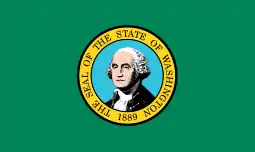 Washington, in a manner similar to Oregon, has not had a Republican governor since 1985.
Washington, in a manner similar to Oregon, has not had a Republican governor since 1985.
Dominated by the Republican Party:
 Alabama: dominated by Republicans since the mid-1990s.
Alabama: dominated by Republicans since the mid-1990s.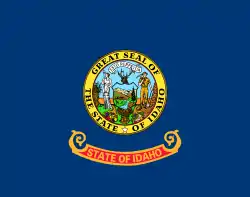 Idaho has been dominated by Republicans for most of its existence, with no Democratic governors since 1994 and only two years in which the State Senate was tied evenly since 1960.
Idaho has been dominated by Republicans for most of its existence, with no Democratic governors since 1994 and only two years in which the State Senate was tied evenly since 1960. Kansas has been dominated by Republicans for most of its existence, with only four years of Democratic majorities in the State House of Representatives since 1915 and only Republican majorities in the same period. Since 1967, however, five of the last nine governors have been Democrats, although one of these Democrats only held office for two years.[16]
Kansas has been dominated by Republicans for most of its existence, with only four years of Democratic majorities in the State House of Representatives since 1915 and only Republican majorities in the same period. Since 1967, however, five of the last nine governors have been Democrats, although one of these Democrats only held office for two years.[16]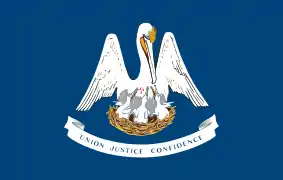 Louisiana is dominated by the Republicans. New Orleans, however, has been dominated by the Democratic Party since the 19th century.
Louisiana is dominated by the Republicans. New Orleans, however, has been dominated by the Democratic Party since the 19th century.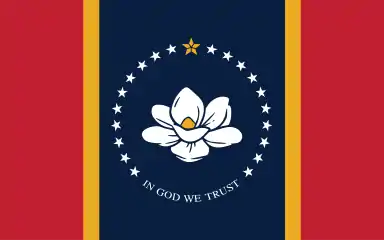 Mississippi: dominated by Republicans since the mid-1990s.
Mississippi: dominated by Republicans since the mid-1990s.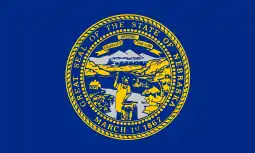 Nebraska has been dominated by Republicans for most of its existence, with a non-partisan legislature (where a de facto Republican majority has held since records began in 2007), mostly Republican governors and elected cabinet officials and only one Republican who changed party to Democrat in 2006 holding state-level partisan office since 1999.
Nebraska has been dominated by Republicans for most of its existence, with a non-partisan legislature (where a de facto Republican majority has held since records began in 2007), mostly Republican governors and elected cabinet officials and only one Republican who changed party to Democrat in 2006 holding state-level partisan office since 1999.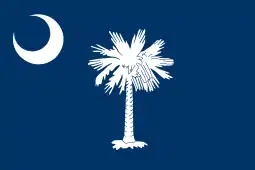 South Carolina: dominated by Republicans since the mid-1990s.
South Carolina: dominated by Republicans since the mid-1990s. South Dakota has been dominated by Republicans for most of its existence, aside from a few Democratic and Populist governments and coalitions with Republicans, with only three elected high officials and two years of State Senate dominance since 1979.
South Dakota has been dominated by Republicans for most of its existence, aside from a few Democratic and Populist governments and coalitions with Republicans, with only three elected high officials and two years of State Senate dominance since 1979.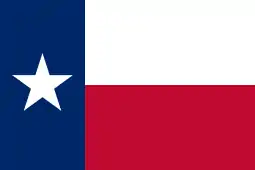 Texas: dominated by Republicans since the mid-1990s.
Texas: dominated by Republicans since the mid-1990s. Utah has been dominated by Republicans for most of its existence, except for Democratic dominance during the Fifth Party System and between 1917 and 1920, the 1890s, and between 1959 and 1984.
Utah has been dominated by Republicans for most of its existence, except for Democratic dominance during the Fifth Party System and between 1917 and 1920, the 1890s, and between 1959 and 1984.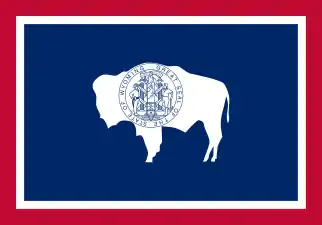 Wyoming has been dominated by Republicans for most of its existence, with only four years where a house of the legislature has been Democratic since 1939, and mostly Republican governors during that period.
Wyoming has been dominated by Republicans for most of its existence, with only four years where a house of the legislature has been Democratic since 1939, and mostly Republican governors during that period.
Dominant-party systems can also exist on native reservations with republican forms of government. The Seneca Nation of Indians, a tribe with territory within the bounds of New York State, has had the Seneca Party as the dominant party in its political system for several decades.
Asia and Oceania
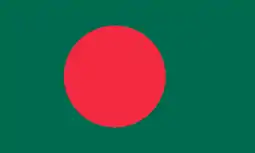 Bangladesh
Bangladesh
- Awami League (AL): Led by Prime Minister Sheikh Hasina, in office since 6 January 2009; In power since 2008
- 2018 Bangladeshi general election: 81.93% and 259 of 300 seats
 Cambodia
Cambodia
- Cambodian People's Party (CPP): Led by Prime Minister Hun Sen, in office since 14 January 1985
- In power since 1993 (sole legal party 1979–1992)
- 2017 Cambodian communal elections: 50.76% and 6,503 of 11,572 councillors
- 2018 Cambodian Senate election: 95.95% and 58 of 58 seats
- 2018 Cambodian general election: 76.85% and 125 of 125 seats
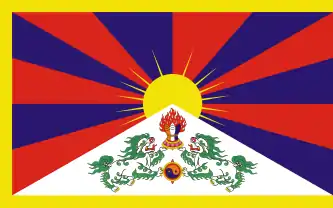 Central Tibetan Administration
Central Tibetan Administration
- National Democratic Party of Tibet, have won the majority of the Tibetan Parliament in Exile seats since its foundation and successfully endorsed Lobsang Sangay for Prime Minister in 2011 and 2016
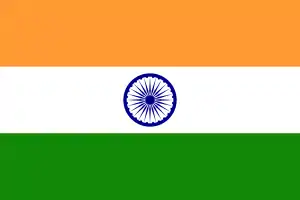 India
India
- Gujarat: Since 1995, the Bharatiya Janata Party has consecutively ruled the state legislature of Gujarat.
- West Bengal: The Left Front, comprising parties such as Communist Party of India (Marxist), Communist Party of India, All India Forward Bloc and Revolutionary Socialist Party ruled the state legislature of West Bengal for 34 years (winning election for seven consecutive times from 1977 to 2011)[17]
- Odisha: Since 2000, the Biju Janata Dal has consecutively ruled the state legislature of Odisha
 Indonesia
Indonesia
- Central Java: Dominated by the Indonesian Democratic Party of Struggle since 2003
- Depok City: Led by Prosperous Justice Party politicians since 2005
- West Sumatra: The Prosperous Justice Party won every gubernatorial elections in 2010, 2015 and 2020
 Japan
Japan
- Liberal Democratic Party (LDP): Led by Prime Minister Yoshihide Suga, in office since 16 September 2020
- In power 1955–1993, 1994–2009 and since 2012 (governed in coalition with Komeito since 1999), has only lost two general elections (1993 and 2009) in history.
- Parliamentary election 2017: LDP 284 of 465 seats (Governing coalition 313 of 465 seats).
 Malaysia
Malaysia
- Barisan Nasional: In power from 1957 to 2018 and from 2020 to present (part of Perikatan Nasional led by Prime Minister Muhyiddin Yassin)
- Kelantan: Dominated by the Malaysian Islamic Party since 1990
- Penang: Dominated by the Democratic Action Party since 2008
- Perlis: Barisan Nasional held power since 1959
 Palestinian National Authority
Palestinian National Authority
- West Bank Government (Fatah): Led by President Mahmoud Abbas, in office since 15 January 2005 (as Chairman of the PLO since 26 October 2004)
- In power since 1994
- 2005 Palestinian presidential election: Mahmoud Abbas 62.52%
- Gaza Strip Government (Hamas): Led by Chairman of the Political Bureau Ismail Haniyeh, in office since 6 May 2017 (as Prime Minister from 29 March 2006 to 2 June 2014)
- In power since 2007
- 2006 Palestinian legislative election: 74 of 132 seats and 44.45%
- West Bank Government (Fatah): Led by President Mahmoud Abbas, in office since 15 January 2005 (as Chairman of the PLO since 26 October 2004)
 Samoa[18][19]
Samoa[18][19]
- Human Rights Protection Party (HRPP)
- Led by Prime Minister Tuila'epa Sailele Malielegaoi, in office since 23 November 1998
- In power since 1982
- General election, 2016: HRPP 56.92% 35 of 50 seats
 Singapore
Singapore
- People's Action Party (PAP): Led by Prime Minister Lee Hsien Loong, in office since 12 August 2004
- In power since 5 June 1959[20]
- Parliamentary election, 2020: PAP won 61.2% of the popular vote and 83 out of 93 seats
- Presidential election, 2017: Former PAP member Halimah Yacob won (sole candidate)[note 1]
 Syria
Syria
- National Progressive Front (NPF), a coalition of 10 parties led by the Arab Socialist Ba'ath Party – Syria Region (Baath Party): Led by President Bashar al-Assad, in office since 17 July 2000
- In power since 8 March 1963
- Presidential election, 2014: Bashar al-Assad 88.7%
- Parliamentary election, 2016: Baath Party won 134 of 250 seats (National Progressive Front 200 of 250)
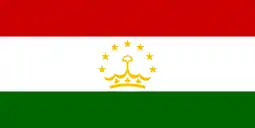 Tajikistan
Tajikistan
- People's Democratic Party of Tajikistan is headed by President Emomalii Rahmon: In power since 1994
- Presidential election in 2013 won by Emomali Rahmon 83.92%.
- Since the Parliamentary election in 2020 holds 47 seats in Assembly of Representatives
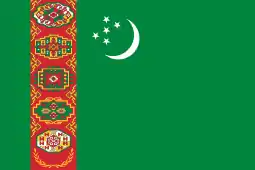 Turkmenistan
Turkmenistan
- Democratic Party of Turkmenistan is headed by Kasymguly Babaev since 18 August 2013
- Presidential election in 2017 won by Gurbanguly Berdimuhammedow 97.69%
- Parliamentary election, 2018: 55 of 125 seats in the Assembly of Turkmenistan
- In power since independence in 1990
- Sole legal party until 2012
Eurasia
 Azerbaijan
Azerbaijan
- New Azerbaijan Party (YAP) has been in power essentially continuously since 1993.
- Parliamentary election, 2020: 72 of 125 seats
- Presidential election, 2018: Ilham Aliyev 86.02%
 Kazakhstan
Kazakhstan
- Nur Otan is headed by former President Nursultan Nazarbayev since 4 July 2007.
- Since last parliamentary election in 2016: 82.20% and holds 84 of 107 seats in the Majilis.
- Presidential election in 2019 won by Kassym-Jomart Tokayev 70,96%.
 Turkey[21][22][23]
Turkey[21][22][23]
- Justice and Development Party
- Led by Recep Tayyip Erdoğan (President 2014–present, Prime Minister 2003-2014)
- In power since 2002
- Presidential election, 2018: Recep Tayyip Erdoğan 52.59%
- Parliamentary election, 2018: 42.56% and 295 of 650 seats
- Local elections, 2019: 42.55%
- Justice and Development Party
 Russia
Russia
- United Russia
- Led by Dmitry Medvedev (President 2008–2012, Prime Minister 2012-2020)
- In power since 2003
- Presidential election, 2018: Vladimir Putin 76.7% (endorsed by United Russia and several other parties, but run as independent)
- Parliamentary election, 2016: 54.20% and 343 of 450 seats
- Governors: 73 of 85
- United Russia
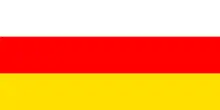 South Ossetia
South Ossetia
- United Ossetia
- Led by Anatoliy Bibilov
- In power since 2014 (a continuation of the governing 2001–2014 Unity Party, now defunct)
- Parliamentary election, 2014: 44.84% and 20 of 34 seats
- Presidential election, 2017: Anatoliy Bibilov 54.80%
Europe
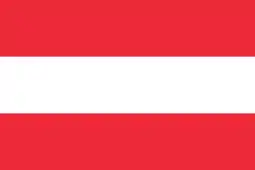 Austria
Austria
 Lower Austria
Lower Austria
- Austrian People's Party: Led by Johanna Mikl-Leitner, Governess (since 2017); In power since 1945[note 2]
- State election, 2018: VPNÖ 49.64% and won 29 of 56 seats
- European Parliament election, 2019: ÖVP 40.1%
- 2019 Austrian legislative election: ÖVP 42.3%
 Tyrol
Tyrol
- Austrian People's Party: Led by Günther Platter, Governor (since 2008); In power since 1945
- 2018 Tyrolean state election: TVP 44.26%
- European Parliament election, 2019: ÖVP 42.6%
- 2019 Austrian legislative election: ÖVP 45.8%
 Vienna
Vienna
- Social Democratic Party of Austria: Led by Michael Häupl, Mayor (since 1994); In power since 1945
- State election, 2015: SPÖ 39.59%
- 2019 Austrian legislative election: SPÖ 27.1%
- European Parliament election, 2019: SPÖ 30.3%
 Vorarlberg
Vorarlberg
- Austrian People's Party: Led by Markus Wallner, Governor (since 2011); In power since 1945
- European Parliament election, 2019: ÖVP 34.6%
- 2019 Austrian legislative election: ÖVP 36.6%
- State election, 2019: VVP 43.53%
 Upper Austria
Upper Austria
- Austrian People's Party: Led by Thomas Stelzer, Governor (since 2017); In power since 1945
- State election, 2015: OÖVP 36.37%
- 2019 Austrian legislative election: ÖVP 36.8%
- European Parliament election, 2019: ÖVP 35.1%
 Germany
Germany
.svg.png.webp) Bavaria
Bavaria
- Christian Social Union in Bavaria (CSU): Led by Markus Söder, Minister-President (since 2018); In power since 1946, with a sole hiatus from 1954 to 1958. From 1966 to 2003 and 2013 to 2018, CSU ruled with an absolute majority. Its share of votes peaked in 1974 at 62%. From 2003 to 2008, CSU held a two-thirds supermajority in the Bavarian Landtag. Since the 2010s, the CSU's dominance has somewhat eroded (38.8% in the 2017 German federal election; 37.2% in the 2018 Bavarian state election), but it is still considered impossible to form a government led by another party in Bavaria.
 Saxony
Saxony
- Christian Democratic Union (CDU):[24] In power since the establishment of the state in 1990. CDU ruled with an absolute majority until 2004, and even a two-thirds supermajority in the Landtag from 1994 to 2004. Its popularity peaked at 56,9% in the 1999 election. In the 2010s, CDU's dominance eroded significantly. In the 2017 German federal election, Saxony's CDU came in second place for the first time in the history of the state, reaching 26.9%, behind the far-right Alternative für Deutschland. Due to the irreconcilability of left-wing and right-wing opposition parties, it is still considered impossible to form a state government led by another party than CDU.
 Hungary
Hungary
- Fidesz–KDNP: In power since 2010 (won in the European Parliament election, 2009: 14 of 22 of seats for Hungary)
- Led by Viktor Orbán, Prime Minister (since 2010)
- 2018 Hungarian parliamentary election: 49.27% and qualified majority, 133 of 199 seats
- European Parliament election, 2019: 52.56% and 13 of 21 of seats for Hungary
 Iceland[25]
Iceland[25]
- Independence Party has governed Iceland since 1946, except for 1956–1959, 1971–1983 and 2009–2013 and is the biggest party since 1942, except for 2009–2013.
- Parliamentary election, 2017: 25.2% and won 16 of 63 seats
 Italy
Italy
 Emilia-Romagna
Emilia-Romagna
- Democratic Party[note 3]: In power since 2007
- Regional election, 2014: PD 44.5% and 31 of 50 seats
- European Parliament election, 2014: PD 52.5%
- Came in second place in Emilia-Romagna to the Five Star Movement in the Chamber of Deputies election, 2018: PD 26.4%
- Came in second place in Emilia-Romagna to the Five Star Movement in the Senate election, 2018: PD 26.3%
 Lombardy
Lombardy
- Centre-right coalition: In power since 1994; Came in second place in Lombardy to the Democratic Party in the European Parliament election, 2014: FI+LN+FdI 34.3%
- Regional election, 2018: CDX 51.23% and won 49 of 80 seats
- Presidential election, 2018: Attilio Fontana 49.7%
- Chamber of Deputies election, 2018: CDX 46.9%
- Senate election, 2018: CDX 47.2%
 Tuscany
Tuscany
- Democratic Party[note 3]: In power since 2007
- Regional election, 2015: PD 48.1% and 25 of 41 seats
- European Parliament election, 2014: PD 52.5%
- Chamber of Deputies election, 2018: PD 29.6%
- Senate election, 2018: PD 30.5%
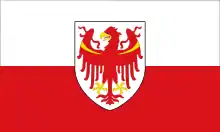 South Tyrol
South Tyrol
- South Tyrolean People's Party: In power since 1948 (The German Association dominated from 1921 and before that it was part of Tyrol)
- 1924 Italian general election: German Association, part of Lists of Slavs and Germans 80%
- Provincial elections, 2013: SVP 45.7% and 17 of 35 seats
- European Parliament election, 2014: SVP 48.0%
- Chamber of Deputies election, 2018: SVP 48.8%
- Senate election, 2018: SVP 49.8%
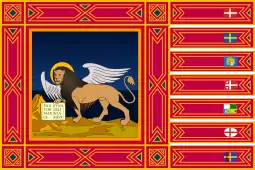 Veneto
Veneto
- Centre-right coalition: In power since 1994
- Came in second place in Veneto to the Democratic Party in the European Parliament election, 2014: FI+LN+FdI 33.2%
- Regional election, 2015: CDX 52.2% and won 29 of 51 seats
- Presidential election, 2015: Luca Zaia 50.1%
- Chamber of Deputies election, 2018: CDX 48.1%
- Senate election, 2018: CDX 48.2%
 Poland (Poland A and B)
Poland (Poland A and B)
- Law and Justice: Dominates Southeast Poland, controls the Presidency and Sejm
- Civic Platform: Dominates Warsaw and Northwest Poland, controls the Senate
 Portugal
Portugal
- Socialist Party: in power since 1995 (with exception from 2002 to 2005 and from 2011 to 2015)
 Madeira: the Social Democratic Party has dominated political life in the autonomous region of Madeira since the first regional elections, in 1976. Alberto João Jardim served as President of the Regional Government uninterruptedly from 1978 to 2015.
Madeira: the Social Democratic Party has dominated political life in the autonomous region of Madeira since the first regional elections, in 1976. Alberto João Jardim served as President of the Regional Government uninterruptedly from 1978 to 2015.
- Local elections, 2013: SDP 34.81%
- European Parliament election, 2014 (in Madeira): SDP 31.0%
- Regional election, 2015: SDP 48.56% and 25 of 47 seats
- 2015 Portuguese legislative election (in Madeira): SDP 37.8% and 3 of 6 seats
 San Marino
San Marino
- The Sammarinese Christian Democratic Party (PDCS) have always had a plurality of seats in the Grand and General Council since 1951, However it has not consistently formed the government. from 2016 to 2020 it was in opposition. The predecessor of the PDCS the Sammarinese People's Party was already biggest party in 1920.
- General Election, 2019. PDCS 33.35%
 Serbia
Serbia
- Serbian Progressive Party: In power since 2012
- Led by Aleksandar Vučić, two-term Prime Minister (2014-2017) and President (2017-present)
- Parliamentary election, 2016: SNS 48.25% and 93 of 250 seats
- 2016 Vojvodina parliamentary election: SNS 44.48% and 63 of 120
- Presidential election, 2017: Aleksandar Vučić, 55.06%
 Spain
Spain
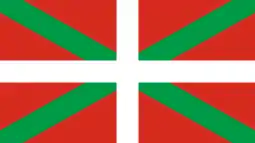 Basque Country
Basque Country
- Basque Nationalist Party
- Has always had the plurality of votes and seats in the Basque Parliament since 1980 and governed the Basque country between 1980 and 2009,and again since 2012.
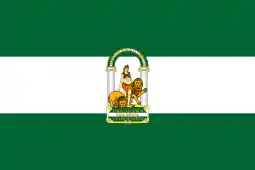 Andalusia
Andalusia
- Spanish Socialist Workers' Party of Andalusia
- Majority in Andalusia from 1977 to 2011
- European Parliament election, 2014: PSOE 35.13%
- Came in second place in Andalusia to the People's Party in the General election, 2016 with 31.20% and won 20 of 61 seats
- Regional election, 2018: PSOE–A 27.95% and on 33 of 109 seats
 United Kingdom:
United Kingdom:
 Scotland: The Scottish National Party has been the largest party in the Scottish Parliament since 2007, and has won every election to the House of Commons in Scotland since 2015.
Scotland: The Scottish National Party has been the largest party in the Scottish Parliament since 2007, and has won every election to the House of Commons in Scotland since 2015..svg.png.webp) Wales: Welsh Labour has won every election to the House of Commons in Wales since 1922, and has been the largest party in the Welsh Parliament (known as the National Assembly for Wales, until 2020) since its inception in 1999.
Wales: Welsh Labour has won every election to the House of Commons in Wales since 1922, and has been the largest party in the Welsh Parliament (known as the National Assembly for Wales, until 2020) since its inception in 1999.
Formerly dominant parties
North America
.svg.png.webp) Canada:
Canada:
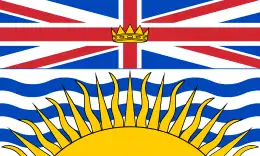 British Columbia: The Social Credit Party held power for all but 3 years between 1952 and 1991, winning 11 of the 12 elections held during this 39-year period.
British Columbia: The Social Credit Party held power for all but 3 years between 1952 and 1991, winning 11 of the 12 elections held during this 39-year period. Alberta: The Social Credit Party governed Alberta from 1935 to 1971; her sister party won the majority of all seats in Alberta in all federal elections between 1935 and 1945, except for 1940, and the Alberta PC Party held power from 1971 to 2015.
Alberta: The Social Credit Party governed Alberta from 1935 to 1971; her sister party won the majority of all seats in Alberta in all federal elections between 1935 and 1945, except for 1940, and the Alberta PC Party held power from 1971 to 2015. Newfoundland and Labrador: The Liberal Party of Newfoundland and Labrador held power from confederation in 1949 until Joey Smallwood's resignation as Premier in 1972 during the hung Parliament created by the 1971 Newfoundland general election.
Newfoundland and Labrador: The Liberal Party of Newfoundland and Labrador held power from confederation in 1949 until Joey Smallwood's resignation as Premier in 1972 during the hung Parliament created by the 1971 Newfoundland general election. Nova Scotia: The Nova Scotia Liberal Party, in the Province of Nova Scotia, held office in an unbroken period from 1882 to 1925. During the period from 1867 to 1956, the party was in power for 76 of 89 years, most of that time with fewer than 5 opposition members.
Nova Scotia: The Nova Scotia Liberal Party, in the Province of Nova Scotia, held office in an unbroken period from 1882 to 1925. During the period from 1867 to 1956, the party was in power for 76 of 89 years, most of that time with fewer than 5 opposition members.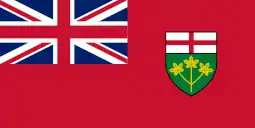 Ontario: Ontario's party system was once a dominant party system, with the Liberal Party of Ontario being the only political party to form government from 1871 to 1905; and having won the majority of the seats available in all twelve elections from 1871 to 1902. The turn of the 20th century saw a shift in party dominance from the Liberal Party of Ontario to the Progressive Conservative Party of Ontario,[note 4] with the latter winning 22 of the 28 elections held in the 20th century.[26][27] From 1943 to 1985, the Progressive Conservatives won 13 consecutive elections, forming the provincial government for 42 years. From 1945 to 1985, the party governed an uninterrupted majority government, with the party's dominance in that era referred to as the "Big Blue Machine". Although the Progressive Conservatives won the most seats in the 1985 election, the party was unable to form government for the first time in 42 years, with the Liberal Party forming a minority government with a confidence and supply arrangement with the New Democratic Party.[26]
Ontario: Ontario's party system was once a dominant party system, with the Liberal Party of Ontario being the only political party to form government from 1871 to 1905; and having won the majority of the seats available in all twelve elections from 1871 to 1902. The turn of the 20th century saw a shift in party dominance from the Liberal Party of Ontario to the Progressive Conservative Party of Ontario,[note 4] with the latter winning 22 of the 28 elections held in the 20th century.[26][27] From 1943 to 1985, the Progressive Conservatives won 13 consecutive elections, forming the provincial government for 42 years. From 1945 to 1985, the party governed an uninterrupted majority government, with the party's dominance in that era referred to as the "Big Blue Machine". Although the Progressive Conservatives won the most seats in the 1985 election, the party was unable to form government for the first time in 42 years, with the Liberal Party forming a minority government with a confidence and supply arrangement with the New Democratic Party.[26] Quebec: The Union Nationale, in the Province of Quebec, held office uninterrupted from 1944 until 1960 with Quiet revolution. And nearly with the Quebec Liberal Party throughout province's political history with start from 1897 to 1935, then a second time in 1985 and 1989, and lastly third time in 2003 and 2008 periods.
Quebec: The Union Nationale, in the Province of Quebec, held office uninterrupted from 1944 until 1960 with Quiet revolution. And nearly with the Quebec Liberal Party throughout province's political history with start from 1897 to 1935, then a second time in 1985 and 1989, and lastly third time in 2003 and 2008 periods.
 Mexico:
Mexico:
- The Institutional Revolutionary Party (PRI) and its predecessors (Partido Laborista Mexicano (PLM) (1920–1928), Partido Nacional Revolucionario (PNR) (1929–1938) and Partido de la Revolución Mexicana (PRM) (1938–1946)) in Mexico held the presidency from 1920 to 2000. The party governed all states until 1989 and controlled both chambers of congress until 1997. As of 2017, the PRI has continued an uninterrupted hold of the governorship in five states: Coahuila, Colima, Campeche, Hidalgo and the State of Mexico.
- Liberal Party, later on as the National Porfirist Party ruled consistently from 1867 to 1911.
 United States:
United States:
- During the "Era of Good Feelings," the Democratic-Republican Party dominated national politics with no effective opposition from the Federalist Party or any third parties, allowing James Monroe to run unopposed in the 1820 presidential election. This dominance continued until the rise of the American Whig Party circa 1830.
- From 1933 to 1995, the Democratic Party held a majority in both Houses of Congress except 1947 to 1949, 1953 to 1955 which Republicans controlled both Houses of Congress and 1981 to 1987 which Republicans controlled the Senate.
- New England:
 New Hampshire had mostly Republican governors from 1857 to 1997 (140 years) – Republicans held the governorship for all but 15 years (were only twice out of office for more than two consecutive years)
New Hampshire had mostly Republican governors from 1857 to 1997 (140 years) – Republicans held the governorship for all but 15 years (were only twice out of office for more than two consecutive years) Vermont had only Republican governors from 1855 to 1963 (108 years)
Vermont had only Republican governors from 1855 to 1963 (108 years)
- Southern United States:
- The South (usually defined as coextensive with the former Confederacy) was known until the era of the 1990s as the "Solid South" due to its states' reliable support the Democratic Party, which at that time had a strong liberal wing. Several states had an unbroken succession of Democratic governors for half a century to over a century.
 Alabama, 1874–1987 (113 years)
Alabama, 1874–1987 (113 years) Arkansas, 1874–1967 (93 years)
Arkansas, 1874–1967 (93 years) Florida, 1877–1967 (90 years)
Florida, 1877–1967 (90 years).svg.png.webp) Georgia, 1872–2003 (131 years)
Georgia, 1872–2003 (131 years) Louisiana, 1877–1980 (103 years)
Louisiana, 1877–1980 (103 years) Mississippi, 1876–1992 (116 years)
Mississippi, 1876–1992 (116 years) North Carolina, 1901–1973 (72 years)
North Carolina, 1901–1973 (72 years) Oklahoma, 1907–1963 (56 years)
Oklahoma, 1907–1963 (56 years) South Carolina, 1876–1975 (99 years)
South Carolina, 1876–1975 (99 years) Tennessee, 1883–1971 (88 years), with two interruptions
Tennessee, 1883–1971 (88 years), with two interruptions Texas, 1874–1979 (105 years)
Texas, 1874–1979 (105 years) Virginia, 1869–1970 (101 years)
Virginia, 1869–1970 (101 years)
- The South (usually defined as coextensive with the former Confederacy) was known until the era of the 1990s as the "Solid South" due to its states' reliable support the Democratic Party, which at that time had a strong liberal wing. Several states had an unbroken succession of Democratic governors for half a century to over a century.
Caribbean and Central America
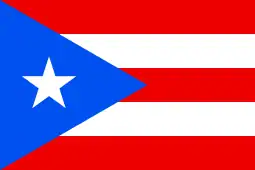 Puerto Rico: The Popular Democratic Party in Puerto Rico from 1949 to 1969.
Puerto Rico: The Popular Democratic Party in Puerto Rico from 1949 to 1969. Dominican Republic: The Blue Party from 1879 to 1899. The Dominican Liberation Party from 2004 to 2020.
Dominican Republic: The Blue Party from 1879 to 1899. The Dominican Liberation Party from 2004 to 2020. Antigua and Barbuda: The Antigua Labour Party in Antigua and Barbuda, 1960–1971 and 1976–2004.
Antigua and Barbuda: The Antigua Labour Party in Antigua and Barbuda, 1960–1971 and 1976–2004.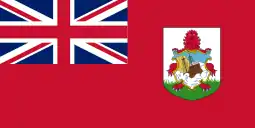 Bermuda: The United Bermuda Party in Bermuda from 1968 to 1998.
Bermuda: The United Bermuda Party in Bermuda from 1968 to 1998. Bahamas: The Progressive Liberal Party in the Bahamas from 1967 to 1992 and 2002–2007
Bahamas: The Progressive Liberal Party in the Bahamas from 1967 to 1992 and 2002–2007 Costa Rica:
Costa Rica:
- The National Republican Party ruled Costa Rica between 1932 and 1948. The National Liberation Party is often referred as the hegemonic or dominant party between 1953 and 1983 as it won most elections, it held the majority in the Legislative Assembly between 1953 and 1978, held consecutive governments several times and was only defeated in 1958, 1966 and 1978 thanks to the entire right-wing opposition nominating a common candidate in the coalition. Only after 1983 with the merge of the Unity Coalition into the Social Christian Unity Party Costa Rica started its two-party system.
- Non-Partisan Liberals dominates Costa Rican presidency from 1846 to 1868.
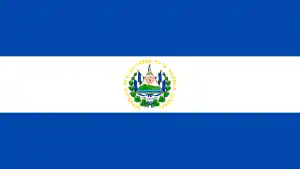 El Salvador: ARENA hold the presidency from 1989 to 2009.
El Salvador: ARENA hold the presidency from 1989 to 2009.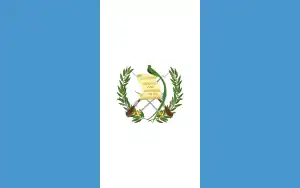 Guatemala: The Conservative Party in Guatemala from 1851 and 1871. The Liberal Party in Guatemala from 1871 and 1920, 1921 and 1926, 1931 and 1944.
Guatemala: The Conservative Party in Guatemala from 1851 and 1871. The Liberal Party in Guatemala from 1871 and 1920, 1921 and 1926, 1931 and 1944. Honduras: National Party governs from 1933 to 1956.
Honduras: National Party governs from 1933 to 1956.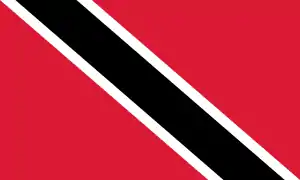 Trinidad and Tobago: People's National Movement ruled from 1956 to 1986.
Trinidad and Tobago: People's National Movement ruled from 1956 to 1986. Nicaragua:
Nicaragua:
- The Partido Liberal Nacionalista of the Somoza family held effective control from the 1930s to 1979. It was never the sole legal party, but elections were often fraught with accusations of fraud and improbable results.
- Conservative Party ruled from 1857 to 1893
South America
 Argentina:
Argentina:
- The National Autonomist Party (PAN) of Argentina from 1874 to 1916.
- The Federalist Party from 1829 to 1852.
 San Luis: The conservative Liberal Democratic Party ruled the province between 1922 and 1943.
San Luis: The conservative Liberal Democratic Party ruled the province between 1922 and 1943.
 Bolivia: Liberal Party ruled from 1899 to 1920. The Revolutionary Nationalist Movement (MNR) in Bolivia from 1952 to 1964. Movement Toward Socialism (MAS) from 2006 to 2019.
Bolivia: Liberal Party ruled from 1899 to 1920. The Revolutionary Nationalist Movement (MNR) in Bolivia from 1952 to 1964. Movement Toward Socialism (MAS) from 2006 to 2019. Brazil: The National Renewal Alliance Party (ARENA) in Brazil from 1965 to 1979
Brazil: The National Renewal Alliance Party (ARENA) in Brazil from 1965 to 1979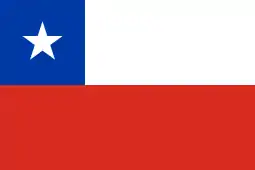 Chile: From 1829 to 1871, a successive amount of parties (Pelucones to Conseravtive to National Party) governed Chile. From 1990 to 2010 the Concertación Coalition hold presidency.
Chile: From 1829 to 1871, a successive amount of parties (Pelucones to Conseravtive to National Party) governed Chile. From 1990 to 2010 the Concertación Coalition hold presidency.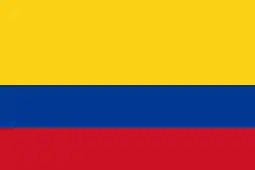 Colombia: The Liberal Party of Colombia from 1861 to 1886, and later on from 1886 to 1900 as the brief successor party National Party, and Colombian Conservative Party from 1900 to 1930
Colombia: The Liberal Party of Colombia from 1861 to 1886, and later on from 1886 to 1900 as the brief successor party National Party, and Colombian Conservative Party from 1900 to 1930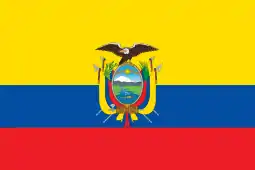 Ecuador: Ecuadorian Radical Liberal Party ruled from 1895 to 1925.
Ecuador: Ecuadorian Radical Liberal Party ruled from 1895 to 1925.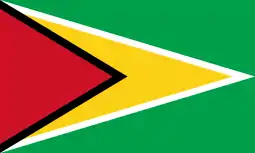 Guyana: The People's National Congress from 1964 to 1992. The People's Progressive Party from 1992 to 2015.
Guyana: The People's National Congress from 1964 to 1992. The People's Progressive Party from 1992 to 2015. Paraguay: The Colorado Party of Paraguay, 1880–1904 and 1948–2008. They were the sole legal party from 1947 to 1962. Liberal Party from 1912 to 1936
Paraguay: The Colorado Party of Paraguay, 1880–1904 and 1948–2008. They were the sole legal party from 1947 to 1962. Liberal Party from 1912 to 1936 Uruguay: The Colorado Party of Uruguay, between 1865 and 1959
Uruguay: The Colorado Party of Uruguay, between 1865 and 1959 Venezuela: Conservative Party ruled from 1830 to 1851.
Venezuela: Conservative Party ruled from 1830 to 1851.
Europe
 Armenia: The Republican Party of Armenia from 1999 to 2018, which after the 2018 Armenian Revolution and the 2018 parliamentary election lost all its seats.
Armenia: The Republican Party of Armenia from 1999 to 2018, which after the 2018 Armenian Revolution and the 2018 parliamentary election lost all its seats. Austria: the Austrian People's Party ruled as the dominant governing coalition leader from 1945 to 1970, and the Social Democratic Party of Austria under similar arrangement from 1970 to 2000.
Austria: the Austrian People's Party ruled as the dominant governing coalition leader from 1945 to 1970, and the Social Democratic Party of Austria under similar arrangement from 1970 to 2000.
.svg.png.webp) Austria-Hungary: the Cisleithania Minister-Presidency is dominated by the Constitutional Party from 1871 to 1893.
Austria-Hungary: the Cisleithania Minister-Presidency is dominated by the Constitutional Party from 1871 to 1893.
 Vienna: The Social Democratic Workers' Party of Austria (predecessor of since 1945 in power SPÖ), dominated Vienna between 1911 and 1934.
Vienna: The Social Democratic Workers' Party of Austria (predecessor of since 1945 in power SPÖ), dominated Vienna between 1911 and 1934. Lower Austria: The Christian Social Party (predecessor of since 1945 in power ÖVP), dominated Lower Austria between 1907 and 1934.
Lower Austria: The Christian Social Party (predecessor of since 1945 in power ÖVP), dominated Lower Austria between 1907 and 1934. Upper Austria: The Christian Social Party (predecessor of since 1945 in power ÖVP), dominated Upper Austria between 1907 and 1934.
Upper Austria: The Christian Social Party (predecessor of since 1945 in power ÖVP), dominated Upper Austria between 1907 and 1934. Vorarlberg: The Christian Social Party (predecessor of since 1945 in power ÖVP), dominated Vorarlberg between 1907 and 1934.
Vorarlberg: The Christian Social Party (predecessor of since 1945 in power ÖVP), dominated Vorarlberg between 1907 and 1934. Tyrol: The Christian Social Party (predecessor of since 1945 in power ÖVP), dominated Tyrol between 1907 and 1934.
Tyrol: The Christian Social Party (predecessor of since 1945 in power ÖVP), dominated Tyrol between 1907 and 1934. Salzburg: The Salzburger Volkspartei, the ÖVP and the predecessors dominated Salzburg between 1919 and 2004.[note 2]
Salzburg: The Salzburger Volkspartei, the ÖVP and the predecessors dominated Salzburg between 1919 and 2004.[note 2] Styria: The Steirische Volkspartei, the ÖVP and the predecessors dominated Styria between 1907 and 2005.[note 2]
Styria: The Steirische Volkspartei, the ÖVP and the predecessors dominated Styria between 1907 and 2005.[note 2]
.svg.png.webp) Belgium: Catholic Party sent Prime Ministers from 1884 to 1937. the Catholic People's Party sent Prime Ministers from 1979 to 1999.
Belgium: Catholic Party sent Prime Ministers from 1884 to 1937. the Catholic People's Party sent Prime Ministers from 1979 to 1999.
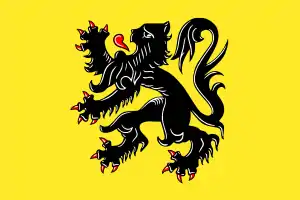 Flanders: The Christian Social Party and the Christen-Democratisch en Vlaams dominated Flanders at least since 1968 to 1999.
Flanders: The Christian Social Party and the Christen-Democratisch en Vlaams dominated Flanders at least since 1968 to 1999.
 Spain
Spain
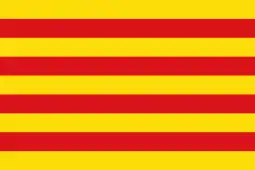 Catalonia: Convergence and Union coalition (federated political party after 2001) in Catalonia governed the autonomous Catalan government from 1980 to 2003 under the leadership of Jordi Pujol with parliamentary absolute majority or in coalition with other smaller parties.
Catalonia: Convergence and Union coalition (federated political party after 2001) in Catalonia governed the autonomous Catalan government from 1980 to 2003 under the leadership of Jordi Pujol with parliamentary absolute majority or in coalition with other smaller parties.
 Croatia: The Croatian Democratic Union was in power from the first multi-party elections in 1990, when Croatia was still a constituent republic of SFR Yugoslavia, until it lost parliamentary and presidential elections in 2000. For most of the 1990s, the party had an absolute majority in both the Chamber of Representatives and the Chamber of Counties, while its chairman, Franjo Tuđman, was President of Croatia under a de facto superpresidential system of government until his death in 1999.
Croatia: The Croatian Democratic Union was in power from the first multi-party elections in 1990, when Croatia was still a constituent republic of SFR Yugoslavia, until it lost parliamentary and presidential elections in 2000. For most of the 1990s, the party had an absolute majority in both the Chamber of Representatives and the Chamber of Counties, while its chairman, Franjo Tuđman, was President of Croatia under a de facto superpresidential system of government until his death in 1999. Denmark: The National Landowners, and later the Højre, ruled Denmark from 1874 to 1901.
Denmark: The National Landowners, and later the Højre, ruled Denmark from 1874 to 1901. Finland: the Agrarian League, later the Centre Party dominated the Presidency under Urho Kekkonen from 1956 to 1982.
Finland: the Agrarian League, later the Centre Party dominated the Presidency under Urho Kekkonen from 1956 to 1982. Georgia: The Union of Citizens of Georgia was the Dominant political force from it's establishment in 1995 to it's dissolution and overthrow in 2003, in the Rose Revolution during which Party leader, President Eduard Shevardnadze was ousted. in the following elections, the United National Movement won a Supermajority in Parliament, and it's Leader Mikheil Saakashvili won the presidency with 96.0% of the vote, The party won every national election until the 2012 Parliamentary election during which it was defeated by the Georgian Dream Coalition. Mikheil Saakashvili was reelected in 2008, and served until 2013. 1995–2012
Georgia: The Union of Citizens of Georgia was the Dominant political force from it's establishment in 1995 to it's dissolution and overthrow in 2003, in the Rose Revolution during which Party leader, President Eduard Shevardnadze was ousted. in the following elections, the United National Movement won a Supermajority in Parliament, and it's Leader Mikheil Saakashvili won the presidency with 96.0% of the vote, The party won every national election until the 2012 Parliamentary election during which it was defeated by the Georgian Dream Coalition. Mikheil Saakashvili was reelected in 2008, and served until 2013. 1995–2012 Germany: the Christian Democratic Union ruled West Germany from its establishment in 1949 to 1969.
Germany: the Christian Democratic Union ruled West Germany from its establishment in 1949 to 1969.
 Baden-Württemberg: The Christian Democratic Union of Germany ruled from 1953 to 2011 and was biggest party until 2016 (except in Württemberg-Baden for 1950–1952), but is still biggest party at German federal elections[28] and European Parliament elections.[29] And in the predecessor state of Baden the Centre Party was the biggest party during the Weimar republic until 1930.
Baden-Württemberg: The Christian Democratic Union of Germany ruled from 1953 to 2011 and was biggest party until 2016 (except in Württemberg-Baden for 1950–1952), but is still biggest party at German federal elections[28] and European Parliament elections.[29] And in the predecessor state of Baden the Centre Party was the biggest party during the Weimar republic until 1930..svg.png.webp) Bavaria: The Bavarian Patriot Party (to 1887), the Centre Party (to 1918) and the Bavarian People's Party was biggest party in the Bavarian Landtag from 1869[30] to 1933 and ruled 1920 to 1933.
Bavaria: The Bavarian Patriot Party (to 1887), the Centre Party (to 1918) and the Bavarian People's Party was biggest party in the Bavarian Landtag from 1869[30] to 1933 and ruled 1920 to 1933..svg.png.webp) Bavaria: The Christian Social Union in Bavaria held majority in the Landtag of Bavaria from 1966 to 2008 with the best vote share in 2003 (60.6% and 124 of 180 seats). The party lost its majority in the 2008 elections and governed in a coalition alongside the FDP before regaining its majority in 2013. However, this majority was once again lost in the 2018 state election. CSU is additional biggest party since 1946 (with one exception in 1950 by the similar Bavaria Party).
Bavaria: The Christian Social Union in Bavaria held majority in the Landtag of Bavaria from 1966 to 2008 with the best vote share in 2003 (60.6% and 124 of 180 seats). The party lost its majority in the 2008 elections and governed in a coalition alongside the FDP before regaining its majority in 2013. However, this majority was once again lost in the 2018 state election. CSU is additional biggest party since 1946 (with one exception in 1950 by the similar Bavaria Party). Saar (not part of Germany at this time): The Centre Party won every Landesrat election from 1922 to 1935.
Saar (not part of Germany at this time): The Centre Party won every Landesrat election from 1922 to 1935..svg.png.webp) Saar Protectorate (not part of Germany at this time): The Christian People's Party of the Saarland hold the majority 1947 to 1955 what was broken by the similar CDU in 1955.
Saar Protectorate (not part of Germany at this time): The Christian People's Party of the Saarland hold the majority 1947 to 1955 what was broken by the similar CDU in 1955. Saarland: The Christian Democratic Union of Germany ruled from the return of the Saar to (West) Germany in 1959 to 1980. In Landtag elections, the CDU reached between 36.6% in 1955 and 49.1% in 1975,[31] the CDU also dominated federal elections (except for 1972)[32] and in the European election 1979 the CDU/CSU won 46.4%.[33]
Saarland: The Christian Democratic Union of Germany ruled from the return of the Saar to (West) Germany in 1959 to 1980. In Landtag elections, the CDU reached between 36.6% in 1955 and 49.1% in 1975,[31] the CDU also dominated federal elections (except for 1972)[32] and in the European election 1979 the CDU/CSU won 46.4%.[33]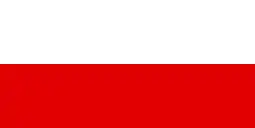 Thuringia: The Christian Democratic Union of Germany ruled from the establishment of the state without interruption until 2014, with an absolute majority from 1999 to 2009. Since 2014, it has been in opposition.
Thuringia: The Christian Democratic Union of Germany ruled from the establishment of the state without interruption until 2014, with an absolute majority from 1999 to 2009. Since 2014, it has been in opposition.
 Hungary
Hungary
.svg.png.webp) Hungary: The Deák Party (merged with the Left Centre to form the Liberal Party in 1875) from 1867 to 1905 and the National Party of Work between 1910 and 1918.[34]
Hungary: The Deák Party (merged with the Left Centre to form the Liberal Party in 1875) from 1867 to 1905 and the National Party of Work between 1910 and 1918.[34].svg.png.webp) Hungary: The Unity Party and the Party of National Unity (renamed Party of Hungarian Life in 1939) in the Kingdom of Hungary from 1922 to 1944.[34]
Hungary: The Unity Party and the Party of National Unity (renamed Party of Hungarian Life in 1939) in the Kingdom of Hungary from 1922 to 1944.[34].svg.png.webp) Hungary: After the elected Prime Minister Ferenc Nagy was forced into exile in May 1947, the Hungarian Communist Party became the Hungary's de facto ruling party until formally declaring the country to be a single-party state in August 1949.[35]
Hungary: After the elected Prime Minister Ferenc Nagy was forced into exile in May 1947, the Hungarian Communist Party became the Hungary's de facto ruling party until formally declaring the country to be a single-party state in August 1949.[35]
 Ireland: Ireland's Fianna Fáil was the largest party in Dáil Éireann between 1932 and 2011 and in power for 61 of those 79 years. However, the party were heavily defeated in the 2011 Irish general election, coming third.
Ireland: Ireland's Fianna Fáil was the largest party in Dáil Éireann between 1932 and 2011 and in power for 61 of those 79 years. However, the party were heavily defeated in the 2011 Irish general election, coming third. Italy: Italy's Christian Democracy dominated the Italian politics for almost 50 years as the major party in every coalition that governed the country from 1944 until its demise amid a welter of corruption allegations in 1992–1994. The main opposition to the Christian democratic governments was the Italian Communist Party.
Italy: Italy's Christian Democracy dominated the Italian politics for almost 50 years as the major party in every coalition that governed the country from 1944 until its demise amid a welter of corruption allegations in 1992–1994. The main opposition to the Christian democratic governments was the Italian Communist Party.
- Emilia-Romagna: The Italian Socialist Party dominated the region from 1909 until the rise of Fascism.
- Emilia-Romagna: The Italian Communist Party dominated the region from 1946 until 1991.
- Emilia-Romagna: The Democratic Party of the Left dominated the region from 1991 until 1998.
- Emilia-Romagna: The Democrats of the Left dominated the region from 1998 until 2007.
 Tuscany: The Italian Communist Party dominated the region from 1946 until 1953, and then from 1963 until 1991.
Tuscany: The Italian Communist Party dominated the region from 1946 until 1953, and then from 1963 until 1991. Tuscany: The Democratic Party of the Left dominated the region from 1991 until 1998.
Tuscany: The Democratic Party of the Left dominated the region from 1991 until 1998. Tuscany: The Democrats of the Left dominated the region from 1998 until 2007.
Tuscany: The Democrats of the Left dominated the region from 1998 until 2007.
 Liechtenstein: Progressive Citizen's Party governed from 1928 to 1970.
Liechtenstein: Progressive Citizen's Party governed from 1928 to 1970. Luxembourg: The Christian Social People's Party (CSV), with its predecessor Party of the Right, governed Luxembourg continuously since 1915 until 2013, except for 1974–1979. However, Luxembourg has a coalition system, and the CSV has been in coalition with at least one of the two next two leading parties for all but four years. It has always won a plurality of seats in parliamentary elections, although it lost the popular vote in 1964 and 1974.
Luxembourg: The Christian Social People's Party (CSV), with its predecessor Party of the Right, governed Luxembourg continuously since 1915 until 2013, except for 1974–1979. However, Luxembourg has a coalition system, and the CSV has been in coalition with at least one of the two next two leading parties for all but four years. It has always won a plurality of seats in parliamentary elections, although it lost the popular vote in 1964 and 1974. Monaco: Rally & Issues governed the National Assembly from 1962 to 2003.
Monaco: Rally & Issues governed the National Assembly from 1962 to 2003.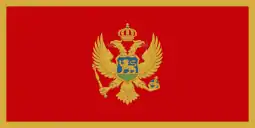 Montenegro: The Democratic Party of Socialists (DPS) has ruled Montenegro since 1990 to 2020, recently defeated in the 2020 election.
Montenegro: The Democratic Party of Socialists (DPS) has ruled Montenegro since 1990 to 2020, recently defeated in the 2020 election. Norway: The Norwegian Labour Party ruling from 1935 to 1963 (including the 5 years of Government-in-exile during World War II), though it has been the biggest party in Norway since 1927 and has been in power many other times.
Norway: The Norwegian Labour Party ruling from 1935 to 1963 (including the 5 years of Government-in-exile during World War II), though it has been the biggest party in Norway since 1927 and has been in power many other times. Portugal: The Portuguese Republican Party, during most of the Portuguese First Republic's existence (1910–1926): After the coup that put an end to Portugal's constitutional monarchy in 1910, the electoral system, which had always ensured victory to the party in government, was left unchanged. Before 1910, it had been the reigning monarch's responsibility to ensure that no one party remain too long in government, usually by disbanding Parliament and calling for new elections. The republic's constitution added no such proviso, and the Portuguese Republican Party was able to keep the other minor republican parties (monarchic parties had been declared illegal) from winning elections. On the rare occasions when it was ousted from power, it was overthrown by force and was again by the means of a counter-coup that it returned to power, until its final fall, with the republic itself, in 1926.
Portugal: The Portuguese Republican Party, during most of the Portuguese First Republic's existence (1910–1926): After the coup that put an end to Portugal's constitutional monarchy in 1910, the electoral system, which had always ensured victory to the party in government, was left unchanged. Before 1910, it had been the reigning monarch's responsibility to ensure that no one party remain too long in government, usually by disbanding Parliament and calling for new elections. The republic's constitution added no such proviso, and the Portuguese Republican Party was able to keep the other minor republican parties (monarchic parties had been declared illegal) from winning elections. On the rare occasions when it was ousted from power, it was overthrown by force and was again by the means of a counter-coup that it returned to power, until its final fall, with the republic itself, in 1926. Switzerland: From 1848 to 1891, the Free Democratic Party hold all seven seats of the Federal Council, thus having full control of the Swiss Directorial Government.
Switzerland: From 1848 to 1891, the Free Democratic Party hold all seven seats of the Federal Council, thus having full control of the Swiss Directorial Government. Sweden: The Swedish Social Democratic Party in Sweden from 1932 to 2006 except only for some months in 1936 (1936–1939 and 1951–1957 in coalition with the Farmers' League, 1939–1945 at the head of a government of national unity), 1976-1982 and 1991–1994. The party is still the largest party in Sweden and has been so in every general election since 1917 (hence the largest party even before the universal suffrage was introduced in 1921). The former Prime minister and party leader Tage Erlander led the Swedish government for an uninterrupted tenure of 23 years (1946–1969), the longest in any democracy so far. Since 2006 the party support has declined, but in 2014 it returned to government but its led centre-left coalition without majority.
Sweden: The Swedish Social Democratic Party in Sweden from 1932 to 2006 except only for some months in 1936 (1936–1939 and 1951–1957 in coalition with the Farmers' League, 1939–1945 at the head of a government of national unity), 1976-1982 and 1991–1994. The party is still the largest party in Sweden and has been so in every general election since 1917 (hence the largest party even before the universal suffrage was introduced in 1921). The former Prime minister and party leader Tage Erlander led the Swedish government for an uninterrupted tenure of 23 years (1946–1969), the longest in any democracy so far. Since 2006 the party support has declined, but in 2014 it returned to government but its led centre-left coalition without majority. Turkey: In Turkey's single-party period, the Republican People's Party became the major political organisation of a single-party state. However, CHP faced two opposition parties during this period, both established upon the request of the founder of Turkey and CHP leader, Mustafa Kemal Atatürk, in efforts to allegedly jump-start multiparty democracy in Turkey.[36] AKP has been the dominant party a few times in a fluctuating manner throughout the years since it came to power in 2002. The pro-Kurdish Peoples' Democratic Party[note 5] was the dominant party in the mainly Kurdish southeast from 1991 until the 2016 Turkish coup d'état attempt which resulted in massive purges and the takeover of municipalities by the state.
Turkey: In Turkey's single-party period, the Republican People's Party became the major political organisation of a single-party state. However, CHP faced two opposition parties during this period, both established upon the request of the founder of Turkey and CHP leader, Mustafa Kemal Atatürk, in efforts to allegedly jump-start multiparty democracy in Turkey.[36] AKP has been the dominant party a few times in a fluctuating manner throughout the years since it came to power in 2002. The pro-Kurdish Peoples' Democratic Party[note 5] was the dominant party in the mainly Kurdish southeast from 1991 until the 2016 Turkish coup d'état attempt which resulted in massive purges and the takeover of municipalities by the state. United Kingdom:
United Kingdom:
- The Conservative and Unionist Party held power alone or as the largest coalition partner from 1916 to 1923, from 1924 to 1929, from 1931 to 1945, from 1951 to 1964, from 1970 to 1974, from 1979 to 1997 and from 2010 to present.
- Its predecessor, Tories, governed from 1783 to 1806, and 1807 to 1830.
- The Whigs dominated United Kingdom politics from 1714 to 1762 during the Whig Supremacy.
 Scotland: Scottish Labour won every election to the House of Commons in Scotland from 1964 to 2015, where it was heavily defeated and reduced to 1 seat.[37] It controlled the Scottish Parliament from its inception in 1999 until the 2007 election where it lost to the SNP.[38]
Scotland: Scottish Labour won every election to the House of Commons in Scotland from 1964 to 2015, where it was heavily defeated and reduced to 1 seat.[37] It controlled the Scottish Parliament from its inception in 1999 until the 2007 election where it lost to the SNP.[38] Northern Ireland: The Ulster Unionist Party won every election between 1921 and 1972 in the former devolved administration of Northern Ireland.[39]
Northern Ireland: The Ulster Unionist Party won every election between 1921 and 1972 in the former devolved administration of Northern Ireland.[39]
- The Conservative and Unionist Party held power alone or as the largest coalition partner from 1916 to 1923, from 1924 to 1929, from 1931 to 1945, from 1951 to 1964, from 1970 to 1974, from 1979 to 1997 and from 2010 to present.
.svg.png.webp) SFR Yugoslavia: League of Communists of Yugoslavia from 1944/1945 until the party's dissolution in 1990.
SFR Yugoslavia: League of Communists of Yugoslavia from 1944/1945 until the party's dissolution in 1990.%253B_Flag_of_Serbia_and_Montenegro_(2003%E2%80%932006).svg.png.webp) FR Yugoslavia: The Socialist Party of Serbia from 1992 to 2000.
FR Yugoslavia: The Socialist Party of Serbia from 1992 to 2000.
Asia
.svg.png.webp) Philippines: The Nacionalista Party in the Philippines was the dominant party during various times in the nation's history from 1916–1941, and on 1945. From 1978 to 1986 Kilusang Bagong Lipunan operated as a dominant party.
Philippines: The Nacionalista Party in the Philippines was the dominant party during various times in the nation's history from 1916–1941, and on 1945. From 1978 to 1986 Kilusang Bagong Lipunan operated as a dominant party. India: The Indian National Congress held power both at the union and at many states from its Independence in 1947 to 1977, and from 1980 to 1989. It formed minority governments from 1991 to 1996, and from 2004 to 2014.[40]
India: The Indian National Congress held power both at the union and at many states from its Independence in 1947 to 1977, and from 1980 to 1989. It formed minority governments from 1991 to 1996, and from 2004 to 2014.[40] Bangladesh: In Bangladesh, the Awami League was the country's predominant political party between 1972 and 1975 and from 2009 to present. After the military coup of 1975, the Bangladesh Nationalist Party (BNP) became the dominant political force between 1977 and 1982. Under the autocratic regime of General Hussain Muhammad Ershad, the Jatiya Party was the dominant party between 1986 and 1990. Currently, Bangladesh Awami League again has become the dominant political force since 2008.
Bangladesh: In Bangladesh, the Awami League was the country's predominant political party between 1972 and 1975 and from 2009 to present. After the military coup of 1975, the Bangladesh Nationalist Party (BNP) became the dominant political force between 1977 and 1982. Under the autocratic regime of General Hussain Muhammad Ershad, the Jatiya Party was the dominant party between 1986 and 1990. Currently, Bangladesh Awami League again has become the dominant political force since 2008. Cambodia: The Democratic Party was the dominant party in Cambodia from 1946 to 1955, The Sangkum in Cambodia was the dominant party under Prince Norodom Sihanouk as head of government from 1955 to 1970. Under the Khmer Republic the Social Republican Party was the dominant party under General Lon Nol from 1972 to 1975.
Cambodia: The Democratic Party was the dominant party in Cambodia from 1946 to 1955, The Sangkum in Cambodia was the dominant party under Prince Norodom Sihanouk as head of government from 1955 to 1970. Under the Khmer Republic the Social Republican Party was the dominant party under General Lon Nol from 1972 to 1975..svg.png.webp) Burma: The Anti-Fascist People's Freedom League in Burma (now Myanmar) from 1948 to 1962. The Union Solidarity and Development Party from 2011 to 2016 (as a military junta from 1988 to 2011).
Burma: The Anti-Fascist People's Freedom League in Burma (now Myanmar) from 1948 to 1962. The Union Solidarity and Development Party from 2011 to 2016 (as a military junta from 1988 to 2011). Republic of China: The Kuomintang established a de facto one-party state in the Republic of China on the mainland and subsequently on Taiwan until political liberalization and the lifting of martial law in the late 1980s. The Kuomintang continued to dominate the political system until the victory of the opposition Democratic Progressive Party in the 2000 presidential election. Kuomintang maintained control of the Legislative Yuan until 2016.
Republic of China: The Kuomintang established a de facto one-party state in the Republic of China on the mainland and subsequently on Taiwan until political liberalization and the lifting of martial law in the late 1980s. The Kuomintang continued to dominate the political system until the victory of the opposition Democratic Progressive Party in the 2000 presidential election. Kuomintang maintained control of the Legislative Yuan until 2016. South Korea: Conservative parties: Liberal Party (South Korea) in power 1948–1960, Democratic Republican Party (South Korea) in power 1962–1980, Democratic Justice Party in power 1980–1990, Democratic Liberal Party (South Korea) in power 1990–1995, New Korea Party in power 1995–1997 and Saenuri Party in power 2008–2017.
South Korea: Conservative parties: Liberal Party (South Korea) in power 1948–1960, Democratic Republican Party (South Korea) in power 1962–1980, Democratic Justice Party in power 1980–1990, Democratic Liberal Party (South Korea) in power 1990–1995, New Korea Party in power 1995–1997 and Saenuri Party in power 2008–2017.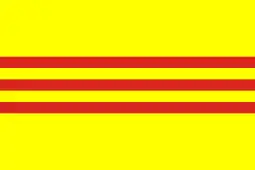 South Vietnam: South Vietnam Personalist Labor Revolutionary Party in power 1955–1963, National Social Democratic Front in power 1969–1975.
South Vietnam: South Vietnam Personalist Labor Revolutionary Party in power 1955–1963, National Social Democratic Front in power 1969–1975.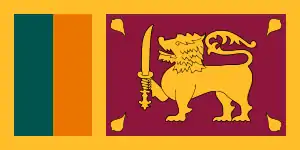 Sri Lanka: United National Party governed from 1977 to 1994, and the Sri Lanka Freedom Party governed from 1994 to 2015.
Sri Lanka: United National Party governed from 1977 to 1994, and the Sri Lanka Freedom Party governed from 1994 to 2015. Indonesia: The Golkar (acronym of Golongan Karya or Functional Groups) organization from 1971 to 1999.
Indonesia: The Golkar (acronym of Golongan Karya or Functional Groups) organization from 1971 to 1999. Israel: Mapai in Israel was the dominant party from the establishment of the state of Israel in 1948 (and before 1944 they won the Assembly of Representatives since 1925) until merging into present-day Israeli Labor Party in 1968. The Labor Party started losing influence in the 1970s, particularly following the Yom Kippur War, and eventually lost power in the 1977 election. The Labor Party continued to participate in several coalition governments until 2009.
Israel: Mapai in Israel was the dominant party from the establishment of the state of Israel in 1948 (and before 1944 they won the Assembly of Representatives since 1925) until merging into present-day Israeli Labor Party in 1968. The Labor Party started losing influence in the 1970s, particularly following the Yom Kippur War, and eventually lost power in the 1977 election. The Labor Party continued to participate in several coalition governments until 2009. Malaysia: Barisan Nasional, in power from 1957 to 2018, defeated in 2018 election.
Malaysia: Barisan Nasional, in power from 1957 to 2018, defeated in 2018 election. Yemen: General People's Congress, In power effectively from 1982 to 2015, ceded effective control after Houthi takeover of Sana'a.
Yemen: General People's Congress, In power effectively from 1982 to 2015, ceded effective control after Houthi takeover of Sana'a.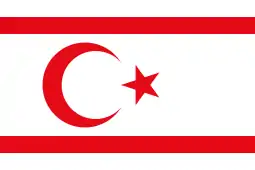 Northern Cyprus: The National Unity Party governed from 1983 to 2005.
Northern Cyprus: The National Unity Party governed from 1983 to 2005.
Africa
.svg.png.webp) South Africa: The National Party in South Africa from 1948 to 1994.
South Africa: The National Party in South Africa from 1948 to 1994. Egypt: The National Democratic Party (NDP) of Egypt, under various names, from 1952 to 2011 (as Arab Socialist Union, sole legal party 1953–1978)
Egypt: The National Democratic Party (NDP) of Egypt, under various names, from 1952 to 2011 (as Arab Socialist Union, sole legal party 1953–1978)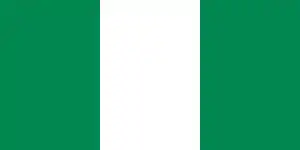 Nigeria: People's Democratic Party (PDP) was in power from May 29, 1999 till May 29, 2015 when the opposition party All Progressives Congress (APC) won the presidential election in 2015.
Nigeria: People's Democratic Party (PDP) was in power from May 29, 1999 till May 29, 2015 when the opposition party All Progressives Congress (APC) won the presidential election in 2015. Tunisia: The Democratic Constitutional Rally in Tunisia, 1956–2011 (as the sole legal party between 1963 and 1981)
Tunisia: The Democratic Constitutional Rally in Tunisia, 1956–2011 (as the sole legal party between 1963 and 1981)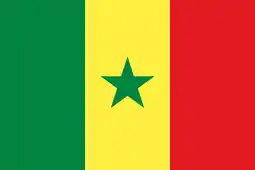 Senegal: The Socialist Party in Senegal from 1960 to 2000.
Senegal: The Socialist Party in Senegal from 1960 to 2000..svg.png.webp) Rhodesia: The Rhodesian Front in Rhodesia (now Zimbabwe), under the leadership of Ian Smith, from 1965 to 1980.
Rhodesia: The Rhodesian Front in Rhodesia (now Zimbabwe), under the leadership of Ian Smith, from 1965 to 1980.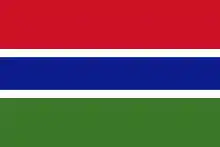 The Gambia: The People's Progressive Party in The Gambia from 1962 to 1994. The Alliance for Patriotic Reorientation and Construction under Yahya Jammeh from 1996 to 2017, with Jammeh ruling first under a Junta after a coup from 1994 to 1996.
The Gambia: The People's Progressive Party in The Gambia from 1962 to 1994. The Alliance for Patriotic Reorientation and Construction under Yahya Jammeh from 1996 to 2017, with Jammeh ruling first under a Junta after a coup from 1994 to 1996.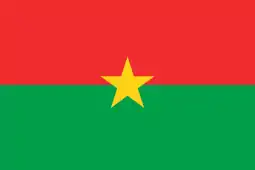 Burkina Faso: The Congress for Democracy and Progress from 1996 to 2014, under Blaise Compaoré, who ruled first as an independent after a coup from 1987 to 1989, then leads Organization for Popular Democracy – Labour Movement from 1989 to 1996.
Burkina Faso: The Congress for Democracy and Progress from 1996 to 2014, under Blaise Compaoré, who ruled first as an independent after a coup from 1987 to 1989, then leads Organization for Popular Democracy – Labour Movement from 1989 to 1996. Sudan: National Congress from 1998 to 2019.
Sudan: National Congress from 1998 to 2019. Zambia: The Movement for Multiparty Democracy in Zambia from 1991 to 2011.
Zambia: The Movement for Multiparty Democracy in Zambia from 1991 to 2011. Kenya: The Kenya African National Union in Kenya from 1963 to 2002.
Kenya: The Kenya African National Union in Kenya from 1963 to 2002. Liberia: True Whig Party ruled de jure dominantly from 1878 to 1980.
Liberia: True Whig Party ruled de jure dominantly from 1878 to 1980. Seychelles: United Seychelles Party ruled from 1977 to 2020.
Seychelles: United Seychelles Party ruled from 1977 to 2020.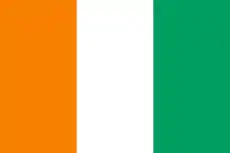 Ivory Coast: Democratic Party of Ivory Coast governed from 1960 to 1999 (from 1960 to 1990 as the sole legal party).
Ivory Coast: Democratic Party of Ivory Coast governed from 1960 to 1999 (from 1960 to 1990 as the sole legal party).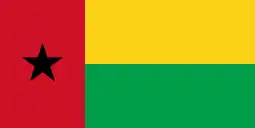 Guinea-Bissau: African Party for the Independence of Guinea and Cape Verde (PAIGC) governed from 1974 to 1999 (from 1974 to 1991 as the sole legal party).
Guinea-Bissau: African Party for the Independence of Guinea and Cape Verde (PAIGC) governed from 1974 to 1999 (from 1974 to 1991 as the sole legal party).
Oceania
.svg.png.webp) Australia: The Liberal Party (generally in coalition with the National Party) held power federally from 1949 to 1972 and from 1975 to 1983 (31 out of 34 years). By the scheduled expiry of the 46th Parliament in 2022, the Liberal-National Coalition will have held power for 20 out of the 26 years between 1996 and 2022.
Australia: The Liberal Party (generally in coalition with the National Party) held power federally from 1949 to 1972 and from 1975 to 1983 (31 out of 34 years). By the scheduled expiry of the 46th Parliament in 2022, the Liberal-National Coalition will have held power for 20 out of the 26 years between 1996 and 2022.
 Northern Territory: The Country Liberal Party held power from the granting of self-government in 1978 to 2001 (23 years).
Northern Territory: The Country Liberal Party held power from the granting of self-government in 1978 to 2001 (23 years).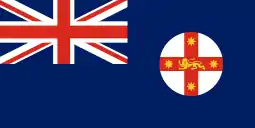 New South Wales: The Labor Party held power from 1941 to 1965 (24 years), and from 1976 to 1988 and 1995 to 2011 (28 out of 35 years) – in total 52 out of 70 years from 1941 to 2011.
New South Wales: The Labor Party held power from 1941 to 1965 (24 years), and from 1976 to 1988 and 1995 to 2011 (28 out of 35 years) – in total 52 out of 70 years from 1941 to 2011. Queensland: The Labor Party held power from 1915 to 1929 and from 1932 to 1957 (39 out of 42 years). The National Party then held power from 1957 to 1989 (32 years).
Queensland: The Labor Party held power from 1915 to 1929 and from 1932 to 1957 (39 out of 42 years). The National Party then held power from 1957 to 1989 (32 years). South Australia: The Liberal and Country League held power from 1933 to 1965 (32 years). The Labor Party held power from 1970 to 1979, from 1982 to 1993 and from 2002 to 2018 (26 out of 38 years).
South Australia: The Liberal and Country League held power from 1933 to 1965 (32 years). The Labor Party held power from 1970 to 1979, from 1982 to 1993 and from 2002 to 2018 (26 out of 38 years). Tasmania: The Labor Party held power from 1934 to 1969 and from 1972 to 1982 (45 out of 48 years), from 1989 to 1992, and from 1998 to 2014 (16 years) – in total 64 out of 80 years from 1934 to 2014.
Tasmania: The Labor Party held power from 1934 to 1969 and from 1972 to 1982 (45 out of 48 years), from 1989 to 1992, and from 1998 to 2014 (16 years) – in total 64 out of 80 years from 1934 to 2014..svg.png.webp) Victoria: The Liberal Party held power from 1955 to 1982 (27 years).
Victoria: The Liberal Party held power from 1955 to 1982 (27 years). Western Australia: The Liberal Party held power from 1947 to 1983 with two one-term interruptions between 1953 and 1956 and 1971 to 1974 (30 out 36 years).
Western Australia: The Liberal Party held power from 1947 to 1983 with two one-term interruptions between 1953 and 1956 and 1971 to 1974 (30 out 36 years). Australian Capital Territory: The Labor Party has held power since 2001, previously holding government between 1989 and 1995 (24 years out of 30 years since self government).
Australian Capital Territory: The Labor Party has held power since 2001, previously holding government between 1989 and 1995 (24 years out of 30 years since self government).
 New Zealand: The Liberal Party governed from 1891 to 1912.
New Zealand: The Liberal Party governed from 1891 to 1912.
See also
Notes
- Presidents in Singapore are not allowed to belong to any party
- The predecessors of the ÖVP are the Christian Social Party ruled from 1907 to the renaming 1933 and the Fatherland Front ruled from 1933 to the Anschluss 1938.
- Formerly its predecessors Italian Socialist Party (before 1924), PCI, PDS and DS.
- Prior to 1942, the Progressive Conservative Party of Ontario was formally known as the Liberal-Conservative Association of Ontario.
- Formerly its predecessors People's Labor Party (with SHP), People's Democracy Party, Democratic People's Party, Thousand Hope Candidates and Labour, Democracy and Freedom Bloc.
References
- Ostroverkhov, A.A. (2017). "In Searching for Theory of One-Party Dominance: World Experience of Studying Dominant-Party Systems (II)". The Journal of Political Theory, Political Philosophy and Sociology of Politics Politeia. 87 (4): 133–149 (p. 136). doi:10.30570/2078-5089-2017-87-4-133-149.
- Ostroverkhov, A.A. (2017). "In Searching for Theory of One-Party Dominance: World Experience of Studying Dominant-Party Systems (I)". The Journal of Political Theory, Political Philosophy and Sociology of Politics Politeia. 86 (3): 136–153 (p. 148). doi:10.30570/2078-5089-2017-86-3-136-153.
- Ostroverkhov, A.A. (2017). "In Searching for Theory of One-Party Dominance: World Experience of Studying Dominant-Party Systems (II)". The Journal of Political Theory, Political Philosophy and Sociology of Politics Politeia. 87 (4): 133–149 (p. 137). doi:10.30570/2078-5089-2017-87-4-133-149.
- Orlović, Slaviša (2015). "The Influence of Electoral System on Party Fragmentation in Serbian Parliament". Serbian Political Thought. 7 (11): 91–106. doi:10.22182/spt.1112015.5.
- Atlagić, Siniša; Vučićević, Dušan (2019). Thirty Years of Political Campaigning in Central and Eastern Europe. Palgrave Macmillan, Cham. p. 20. doi:10.1007/978-3-030-27693-5_21. ISBN 978-3-030-27693-5.
- Suttner, R. (2006), "Party dominance 'theory': Of what value?", Politikon 33 (3), pp. 277-297
- Mehler, Andreas; Melber, Henning; Van Walraven, Klaas (2009). Africa Yearbook: Politics, Economy and Society South of the Sahara in 2008. Leiden: Brill. p. 411. ISBN 978-90-04-17811-3.
- "Archived copy". Archived from the original on 2012-04-01. Retrieved 2012-04-01.CS1 maint: archived copy as title (link) (in English)
- Doorenspleet, Renske; Nijzink, Lia (2014). Party Systems and Democracy in Africa. Basingstoke: Palgrave Macmillan. p. 174. ISBN 978-1-137-01170-1.
- "Botswana's ruling Democratic Party wins general elections". BBC News. BBC. 26 October 2014. Retrieved 22 October 2015.
- O'Gorman, Melanie (26 April 2012). "Why the CCM won't lose: the roots of single-party dominance in Tanzania". Journal of Contemporary African Studies. 30 (2): 313–333. CiteSeerX 10.1.1.410.9369. doi:10.1080/02589001.2012.669566.
- https://www.un.org/en/ga/search/view_doc.asp?symbol=A/RES/34/37&Lang=E&Area=RESOLUTION Archived 2015-09-04 at the Wayback Machine
- Ruiz, Gerardo (18 December 2018). "Partidos conservadores preparan una coalición electoral". CRHoy. Retrieved 18 December 2018.
- Canada's 'natural governing party'. CBC News in Depth, 4 December 2006. Retrieved 2012-08-10.
- "Liberal Party | The Canadian Encyclopedia". www.thecanadianencyclopedia.ca. Retrieved 2020-08-20.
- "State of Kansas Governors". TheUS50.com. Retrieved August 26, 2014.
- Democracy, Peoples' (June 24, 2007). "West Bengal: How The Left Front And Its Government Emerged".
- "Archived copy". Archived from the original on 2011-03-09. Retrieved 2011-03-06.CS1 maint: archived copy as title (link)
- 2010 Human Rights Report: Samoa, U.S. Department of State, Bureau of Democracy, Human Rights, and Labor, April 8, 2011
- "Singapore Elections Department - Parliamentary Election Results". Archived from the original on 2015-09-10. Retrieved 9 September 2015.
- "TURKEY - AKP ushering in 'dominant-party system', says expert". hurriyetdailynews.com. Retrieved 30 May 2015.
- "Turkey Under the AKP: The Era of Dominant-Party Politics". journalofdemocracy.org. 2012-01-19. Retrieved 30 May 2015.
- "Archived copy". Archived from the original on 2014-07-14. Retrieved 2014-06-04.CS1 maint: archived copy as title (link)
- Dresden, Cornelius Pollmer (2014-08-31). "CDU sucht nach einem neuen Partner". Sueddeutsche.de.
- Grétar Thor Eythórsson, Detlef Jahn (2009), "Das politische System Islands", Die Politischen Systeme Westeuropas (in German) (4., aktualisierte und überarbeitete ed.), Wiesbaden: VS Verlag für Sozialwissenschaften, p. 200, ISBN 978-3-531-16464-9
- Steve, Paikin (4 August 2016). "How the Big Blue Machine dominated Ontario politics for more than four decades". TVO. Ontario Educational Communications Authority. Retrieved 4 January 2020.
- Malloy, Jonathan (2 February 2018). "How the 'Big Blue Machine' broke down". The Globe and Mail. The Woodbridge Company. Retrieved 4 January 2020.
- "Bundestagswahlen - Baden-Württemberg".
- "Wahlen zum Europäischen Parlament in Baden-Württemberg".
- "Landtag Bayern 1869-1918".
- "Landtagswahlen im Saarland seit 1945".
- "Bundestagswahlen - Saarland".
- "Wahlen zum Europäischen Parlament im Saarland".
- Bihari, Mihály (2013). "A magyarországi domináns pártrendszer". Politológia: a politika és a modern állam: pártok és ideológiák (in Hungarian). Budapest: Nemzedékek Tudása Tankönyvkiadó. pp. 291–295. ISBN 9789631976281.
- Part 2: Communist take-over, 1946-1949. The Institute for the History of the 1956 Revolution.
- "Subscribe to read". Cite uses generic title (help)
- Cairney, Paul; McGarvey, Neil (2013). Scottish Politics. Houndmills: Palgrave Macmillan Limited. p. 58. ISBN 978-0-230-39046-1.
- Garnett, Mark; Lynch, Philip (2007). Exploring British Politics. London: Pearson Education. p. 322. ISBN 978-0-582-89431-0.
- Johari, J. C. (1997). Indian Political System: a Critical Study of the Constitutional Structure and the Emerging Trends of Indian Politics. New Delhi: Anmol Publications. p. 250. ISBN 978-81-7488-162-5.